Entering Mostar, there is no hiding from the recent past. The scars are on full display. There is no forgetting what has happened here. As we walk from the near derelict bus station towards our apartment in old town via the main east side road, the war is all around us. Once grand buildings utterly destroyed, the doors and windows hastily cinderblocked shut, the crumbling facades pocked with .50 caliber spray and punctured with artillery rounds. Block after block of graveyards in empty lots framed by ruins. The dates on the stones, all of them, ending in the same year. The walk was grim. I see smoke pouring from an abandoned building, but no one seems to notice, a cadre of vagrants inside a bombed out storefront burning garbage for warmth, right in the middle of town. We dodge locals on thin sidewalks until we reach our apartment near the old bridge, a four story reclamation, now an art studio with an apartment on top. Thick steel doors cover the entrance and similar thick steel shutters over all the windows, punctured completely through with .50 caliber spray, except one that is missing. The buildings on either side are either empty or destroyed. This was my first impression of Mostar.
I don’t want this post to be apocalypse porn. Most of old town has been rebuilt and has considerable charm. The west bank has been rebuilt with new structures. There’s a mall and a theater and a McDonalds. Children playing in the streets. By all accounts moving on like any normal town. But my first impression weighs heavy on me. You can’t help but feel the chaos and hopelessness that took this ancient city apart 25 years ago. And I can’t help but compare it to the rancor that slowly separates my own country. The casual almost humorous conjuring of civil war between the red and blue states. And to see what real civil war looks like. Real suffering. It makes me angry.
The conflict in Mostar was complicated and the city was the most badly damaged of any Bosnian city. In short, the Serbian led Yugoslav army began arming Serbian militias and flooding the city with troops for a future military takeover. The Croats and Bosniacs responded by forming militias. When the country voted for independence, fighting broke out and the Serbian forces sieged the city. The Serbs started exterminating everyone not Serbian, sending people off to concentration camps, murdering villages in mass. Later the Croatian forces working with the Bosniac forces expelled the Serbs. Immediately afterward the Croats took control of the city, they started exterminating everyone not Croatian. Concentration camps, murdering whole villages, senseless torture and cruelty. No distinction was made between civilian or military, women or children. The Bosniac forces then fought back and a second war started between the two forces within the city, the Bosniacs now being supplied by the Serbian forces against the Croats. Croats took control of the west bank while the Bosniacs controlled the east bank. The militarily stronger Croat forces launched over 100,000 pieces of artillery into the east bank destroying 75% of the structures. Over 2000 people died in the siege, half of which were civilians. The conflict ended indecisively with a cease fire brokered by the US (under Bill Clinton) and overseen by the EU. But the surrounding towns were brutalized, armed forces going door to door killing every single person, throwing in a grenade or setting fire and then killing anyone who tried to escape.
As the bus wound it’s way up the Neretva river towards the city, the green flatlands are a ghosttown of empty-shell farm houses and buildings that did not survive. The valley was the corridor to Dubrovnik and I can’t imagine the completely innocent people that were caught in the middle. Probably completely neutral people like most of the people back in the States.
We visited the Mostar Museum of War and Genocide today. It shook us. Far worse than I fully realized. I don’t even want to describe the things that bothered me the most (and the exhibit had a multi-room mass grave exhibit in the basement).
Old town
Old town has been rebuilt for the most part. The Stari Grad bridge was reconstructed using local material and traditional techniques. It is impressive and walking the cobblestone lanes between vendors and caffes you feel as though you are in another time. Parallel to the main river, a smaller river is diverted through the town powering fountains and other mechanisms. It creates romantic little spots all through old town with small pedestrian bridges and cafes all along it. Minarets of mosques punctuate the skyline and the call to prayer rings through the valley. Mostar has always been a true meeting of east and west, a mixing place of cultures that have lived in peace together for hundreds of years. We had a terrific time wandering the lanes here and sampling the great food. We can’t accumulate things so shopping was off limits but had we been able there is an array of great things to buy from treats to turkish coffee sets.





A persimmon tree. Coincidentally I was given my first one days earlier by a Serbian traveler we met on the bus.



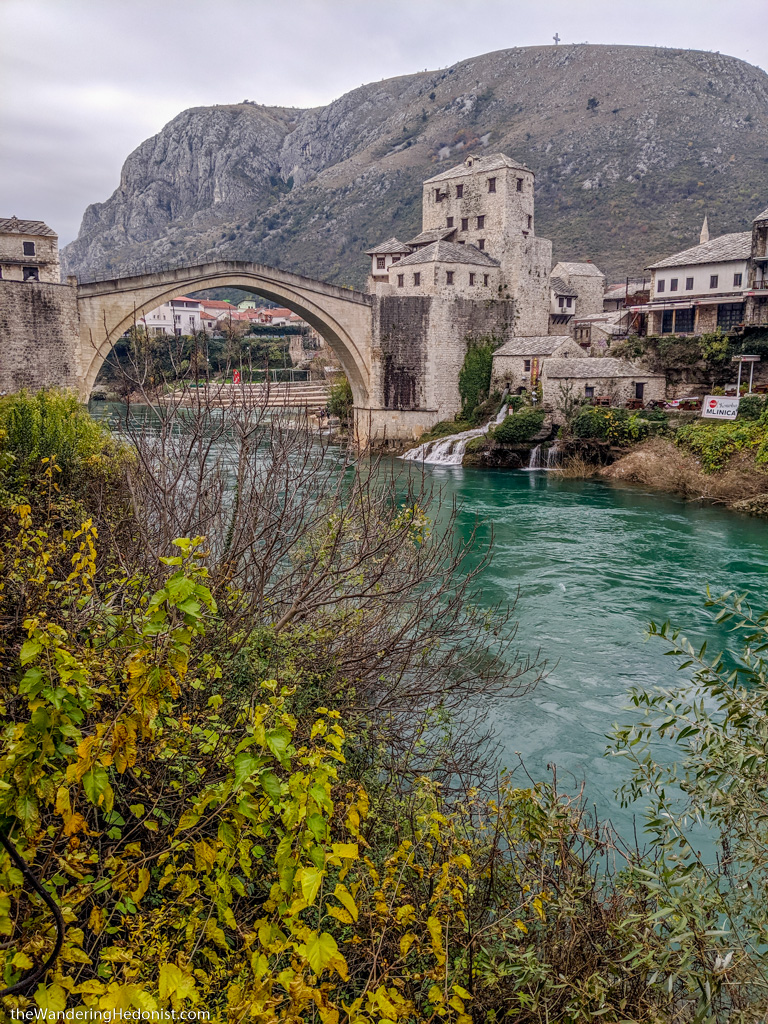
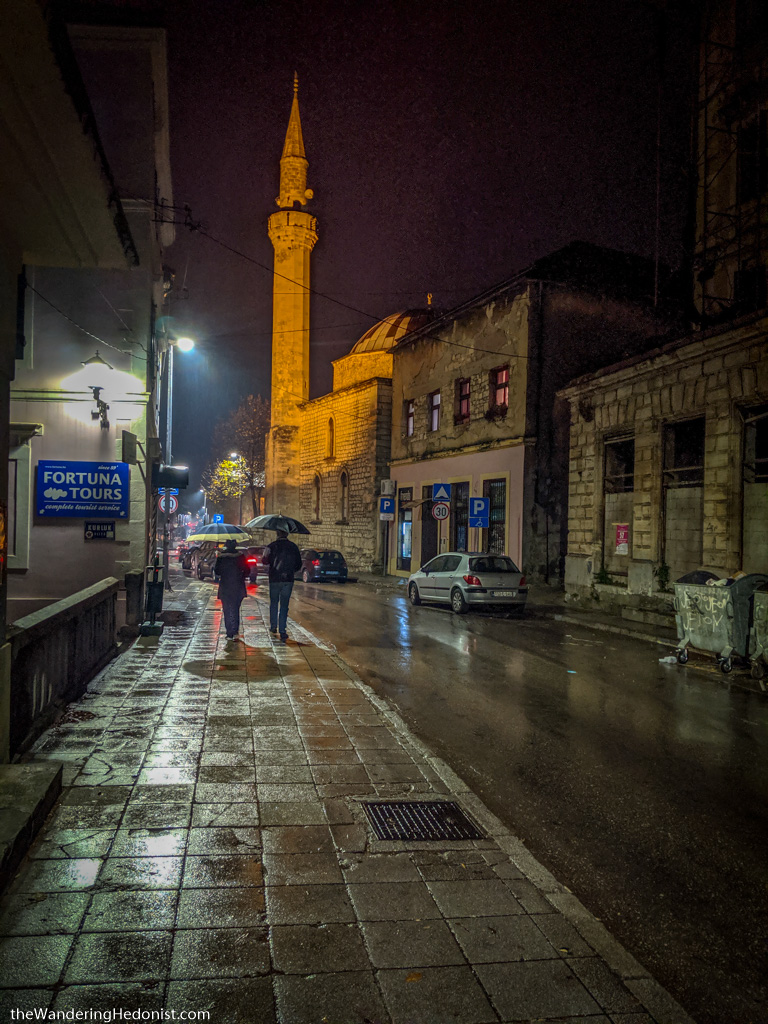
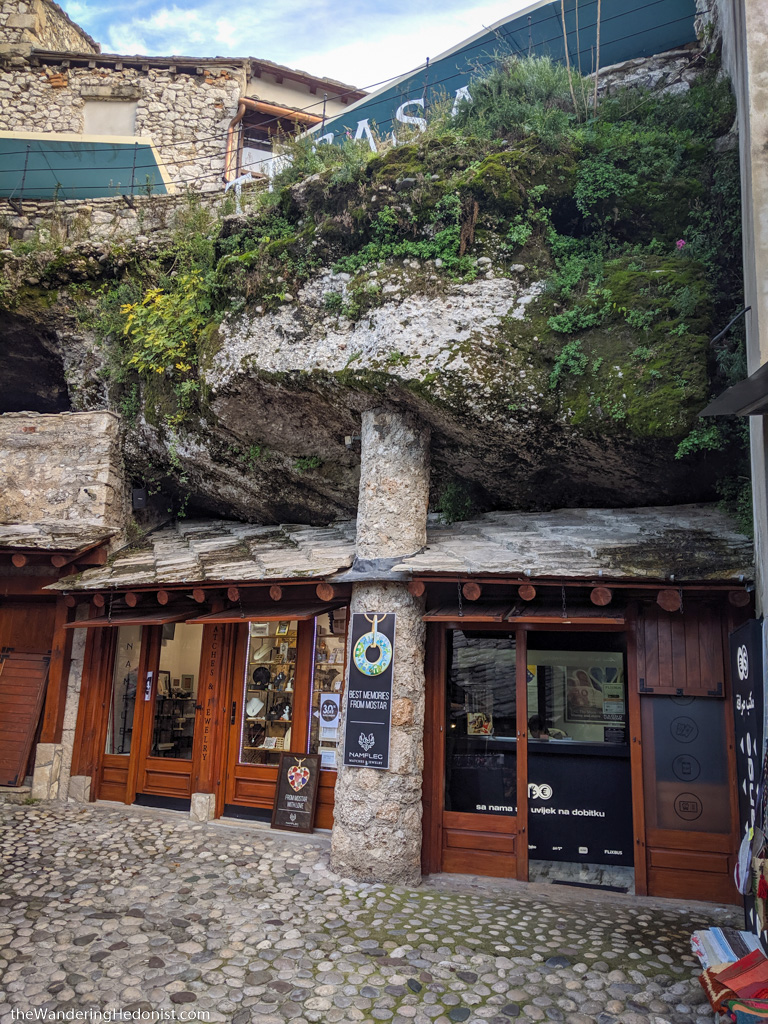
The scars of war
You can’t walk around Mostar without noticing the damage that occurred in the recent wars. Unlike Croatia, the town has struggled and has been slow to repair or replace the buildings and streets. All through even the most populated and touristy areas you’ll run across ruined buildings and the ever present pock marks of .50 caliber spray and artillery holes. Especially on the east side where the shelling was the greatest. Although the main roundabout in the west side is ringed by huge bombed out buildings still as well. I think this had a stronger effect on Katy than it did on me initially and she struggled to be distracted from the recent past. Even our apartment was dotted with holes and the metal shutters swiss cheesed with punctures.


Bosnian coffee
Bosnian coffee is similar to Turkish coffee except the coffee powder is added to already boiling water where Turkish coffee add the powder to the water then brings the water to a boil. But they’re both great. (Truth be told I think I like this version better.) Katy might have been more excited that I try this than I was but now I’m hooked.
The waiter explained the process to me. The coffee is served in a little pitcher and the grounds settle up at the top of the mouth. You first slowly stir the top until the grounds subside and the coffee foam appears on the top. You then pour the coffee into the cup and enjoy. It’s served with sugar but I haven’t decided if I prefer it sweet or black. It’s also usually served with a piece of Turkish delight that’s a nice touch.
Bosnian treats
I’m not usually that focused on desserts. So far we’ve encountered the normal treats around. But I found a couple of new ones in Bosnia that are worth trying. A tufahija is a peeled apple boiled in a sugar syrup then stuffed with walnuts and whipped cream. This thing was sweet but delicious! Šampita is a cake with thin biscuit crust and a thick whipped cream meringue with a thin layer of chocolate on top. I was expecting a bit smoother texture but it was a little stiff and had a crunchy element like sugar crystals. Good though. Very sweet. Hurmaŝice is a turkish syrup biscuit. It’s like a cake, almost a cookie, a bit of grit, then soaked in syrup till it’s soft and almost mushy. Loved this thing.
Bosnian food
So food in Bosnia is very similar to food in Croatia or Kotor. You have the same kinds of cevap and grilled meats. Cabbage rolls and stuffed peppers. But there’s a bit more Turkish influence. You start seeing more rice, more spices. More stewed tomatoes. We started seeing dolmas for the first time which were exactly like a cabbage roll but with a grape leaf on the outside. Lots of meat and less lemony than your standard Greek dolma. We also like this style of eating that is common here. There are about 6-10 standard local dishes like cabbage rolls and dolmas that you can get everywhere. And most places serve a mix dish of all of these plus mashed and boiled potatoes. Some restaurants have a display of the dishes you can preview up front and then offer a few sizes of the mix. We agreed that this was our favorite thing to eat. At this point in our trip we’re a little burned out on grilled meats and on cevapi. Some mixes come with a pile of these sausages so we prefer the ones that don’t. But if you haven’t been in the region for two months, I recommend trying these little sausages too, they’re great! I’ve just eaten my weight in them already.
Sadrvan
To be honest I usually avoid the most obvious restaurants. I assume they’re just tourist traps with overpriced bad food targeted at tourists. And usually I’m right. But this place had so much charm I really wanted to be wrong. When I noticed the array of local food on the pictures boards, we decided to give it a shot and I’m happy we did. Affordable traditional food in a fun setting, right in the heart of old town. And the mannequins or pretty funny if not occasionally a bit creepy. And the dogs outside are pretty awesome too.
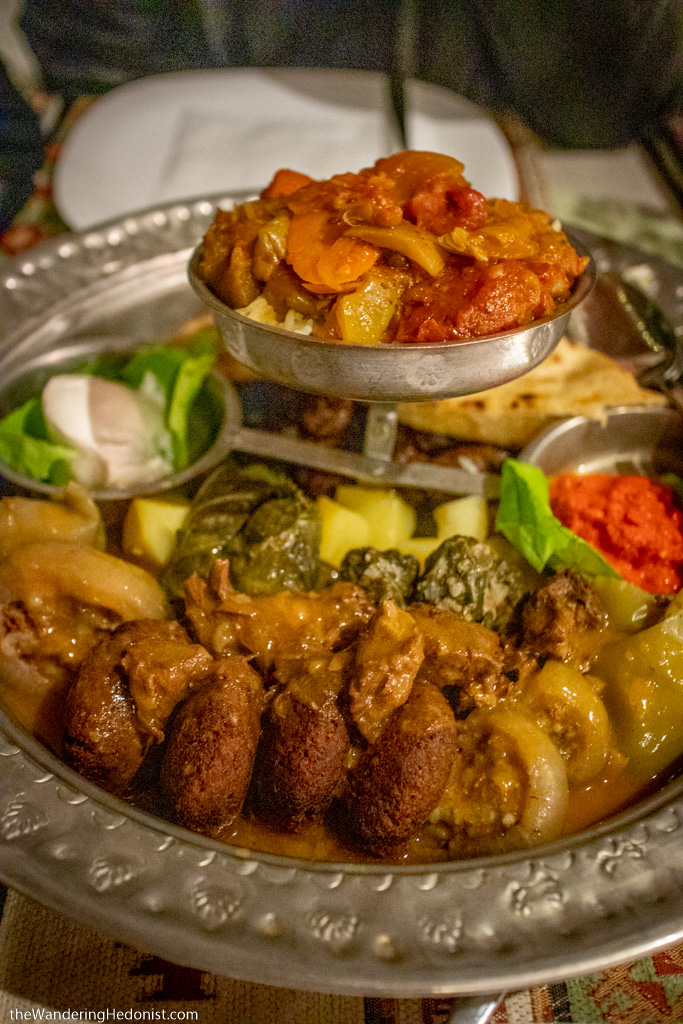
Traditional mixed plate for two. Sarma, dolma, sogan dolma, beef cheeks, cevapi, Bosnian cookie, stuffed peppers, and more!
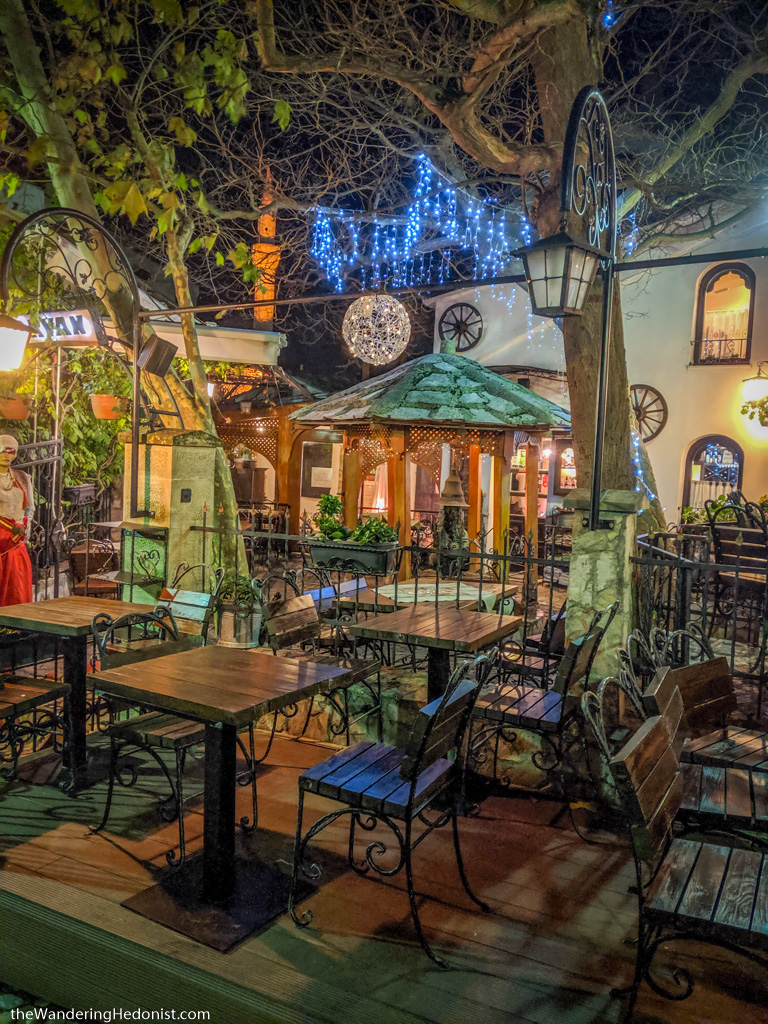
Labirint
We wandered into Labirint after our long walk to old town from the bus station. We knew it was like the most touristy place on the walk but we needed to kill an hour or more and we were tired. However, the “Labirint mix” was a small entree of stuffed peppers and dolmas with potatoes and it was the perfect snack with an outstanding view of the Stari Most bridge and very friendly staff. We returned here for lunch the next day and were not disappointed.
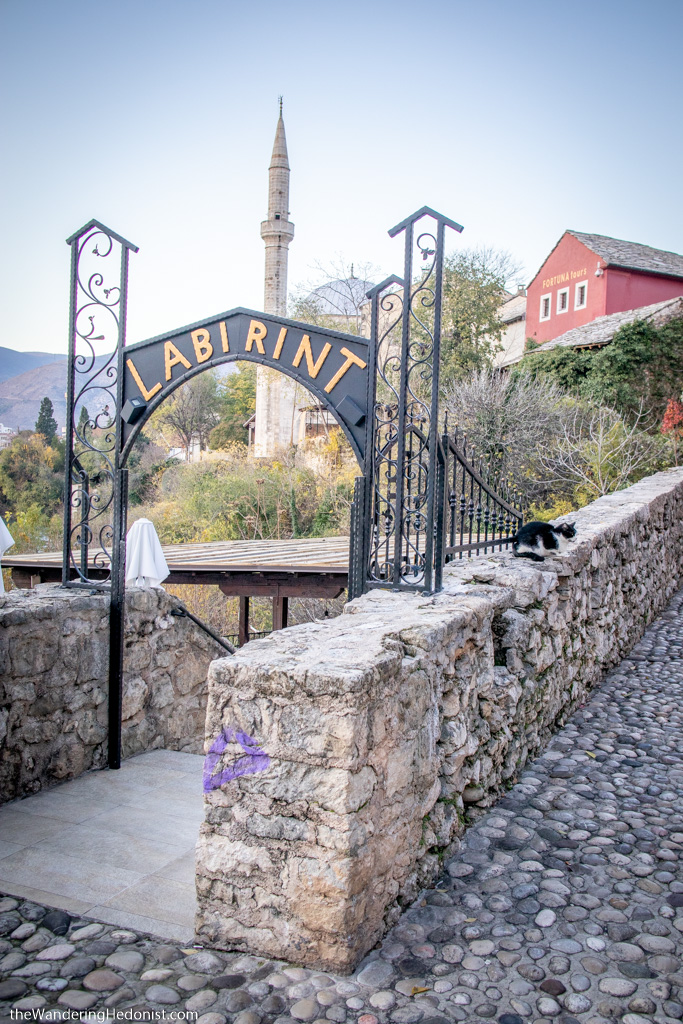
Mediterana Delicata
We picked this place on a whim our first night for dinner. It looked crowded and interesting. We had arrived just at the end of a large rush so it took forever to get our food. The staff were overwhelmed. But the food was great and had large portions, way more than I could eat. I went a little heavy on the babaganoush with “bosnian bread” which was like deep fried bread sticks. The lamb was so tender and the rice/veg underneath was just as rich and delicious as the meat. Katy’s lemon chicken was a flavor bomb. Thumbs up all around.
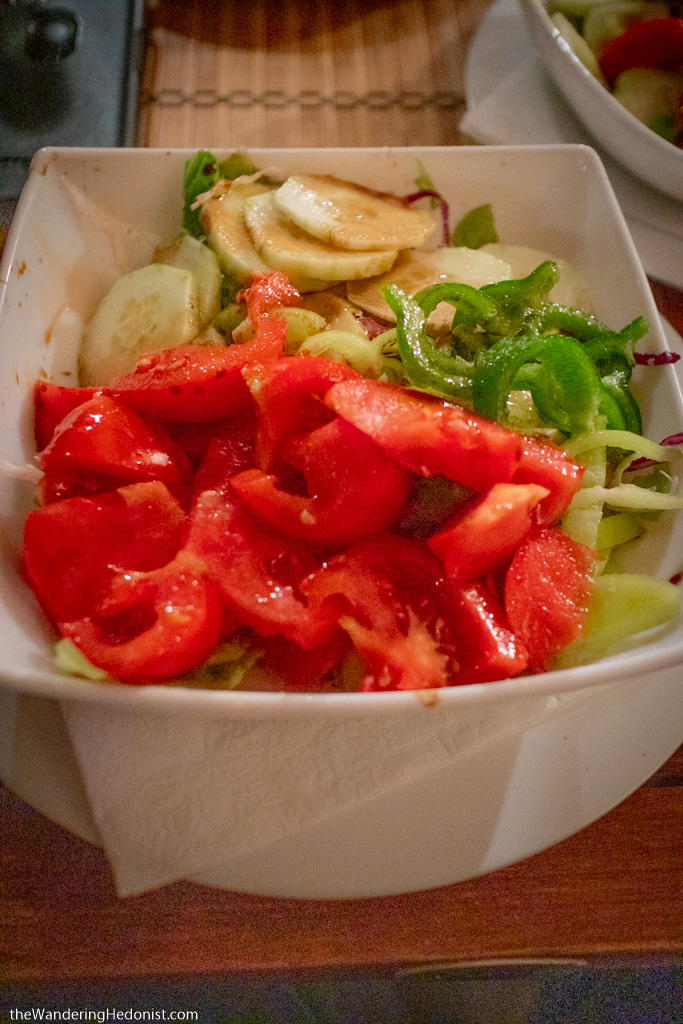
Aščinica Balkan II
This was another place along the main old town walk that I was initially hesitant to try. I had bought some sweets here for Katy because she was home sick and the lady cleverly negotiated me into way more than I wanted. We stopped to look at the burek in the window and the same lady came out to talk us into the store which worked smashingly on Katy and we were inside eating. As it turns out the food was amazing and affordable. Proved wrong once again! Katy was talked into the medium sized mixed plate and I chose the burek. But once the food arrived I knew I had made a colossal mistake. Katy’s plate looked amazing. So I ordered a second medium mixed plate and was not disappointed at all in the decision. Dolma, sarma, beef cheeks, two kinds of potatoes, rice and this bean salad thing, a tomato veg/rice dish, and a “bosnian cookie” which is like a spicy flat meatball. And then finished the meal with a Bosnian coffee. We’ll probably go back again.
Aščinica Balkan
The day after we ate at Aščinica Balkan II Katy discovered Aščinica Balkan a few blocks away, we assume the original location. We loved the food so we thought this would be fun to try. The vibe was a bit more local and laid back, less of a hard sell, and the food was even better. We opted for the medium mix again which was primarily the same except we got more of the stewed beans and yet a third rice dish that was green. Fantastic and filling enough that we still weren’t hungry when dinner time rolled around. We even pushed through the fullness a bit to try a couple deserts with the Bosnian coffee.
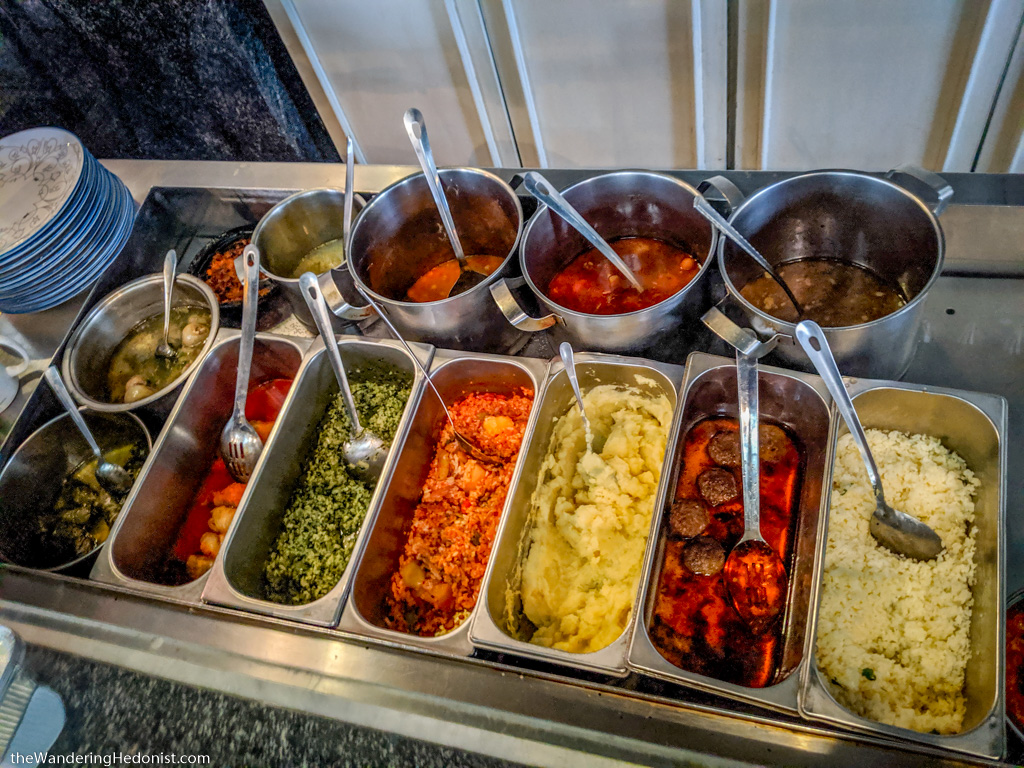
Konoba Taurus
We tried this place our last night. It’s in a really cute location right beside the crooked bridge with the river flowing by underneath. We just wanted something traditional and their menu seemed to have all the local stuff. It not only turned out to be very charming and romantic, the food was really good and it worked out to be one of the cheapest meals of the trip. Win win. I got the simple traditional mix with sarma, dolma, stuffed peppers, a meatball, and mashed potatoes. Excellent little dish. The menu here focuses a bit more on grilled meat like most places. I’m grilled meated out. But Katy got the mixed plate for 1 that has the traditional food plus a pile of steaks, sausages, and chicken. It was way too much to eat but Katy chopped everything left over into tiny bites and we fed all the town cats on the way home. There are a bunch of cute kitties everywhere.
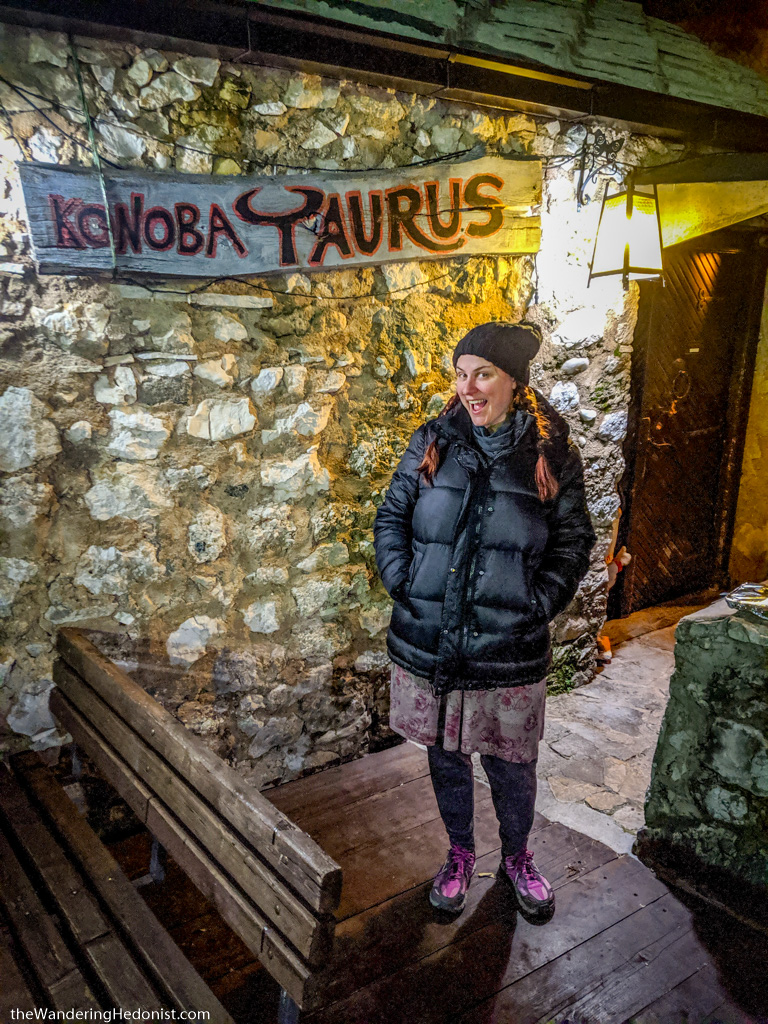
The local hooch
As it turns out every region in the Balkans has its own unique kind of horrible bitters. I guess I’m not a bitters guy because they’ve all been basically undrinkable. But my curiosity requires me to try them at least once. In Bosnia it’s Lavov. I tried Badel’s version, they seem like a safe choice. And yes, it was its own unique kind of horrible. I wish I had the language to properly describe the similarities and differences. It was more similar to Gorski List.

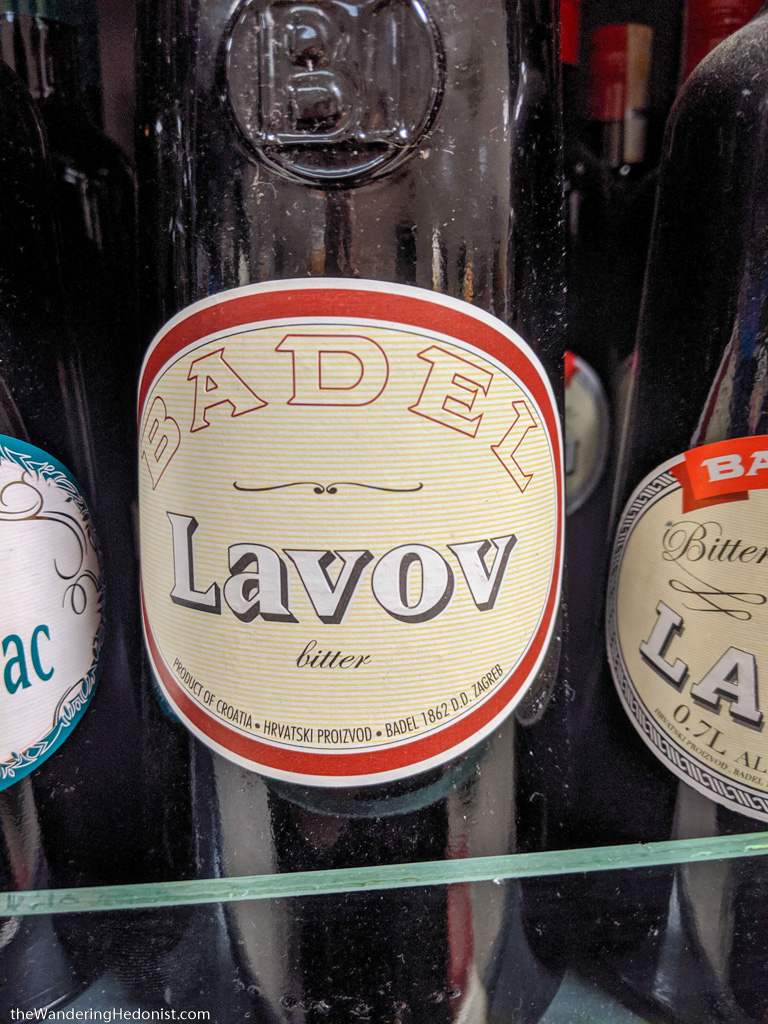
Our little apartment
Now this was an interesting place. I can’t say it was comfortable or homey but it was interesting. And honestly a good deal. This was a four story building that is an art gallery/studio on the ground floor, then the second floor is a living room with a heater and a spiral staircase leading to the third floor with two bedrooms and a full bath. A small stairway then leads up to a fourth loft floor with a small kitchen and table. The main down side was that it was not well insulated and the open vertical design (along with the many 6′ single pane windows) made it impossible to heat. Katy said it felt like she was camping. It took a day to arrange the heaters so that we weren’t uncomfortable. I also had to insulate the living room so I took a spare mattress and stuffed it into the window bay, stacked the couch cushions on top then stuffed the extra pillows all around. It blocked out the light but the room was reasonably warm after. It was also really weird to climb two flights between the kitchen and living room. The outside of the building is dotted with bullet holes in the stone and the 6′ thick steel window coverings on each floor are fully punctured with .50 caliber machine gun spray. It was a little intimidating. That and the fact that I have a strong feeling more than one person was killed in here, we never really got comfortable. But the art was cool and it was very close to old town with a fantastic view of the bridge. I guess it depends on what you’re looking for.
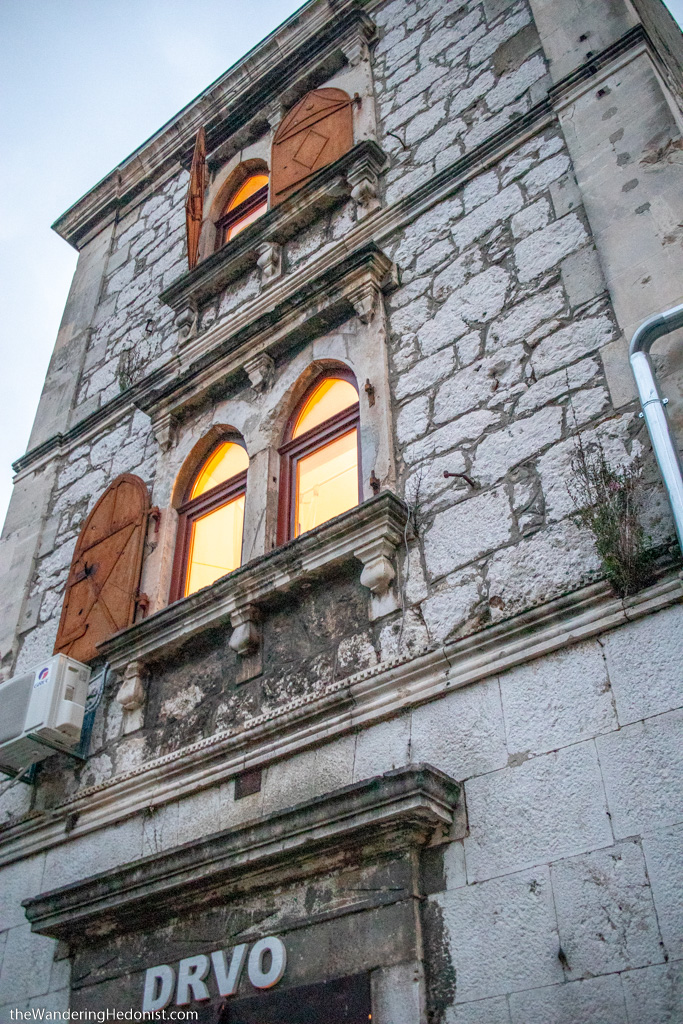
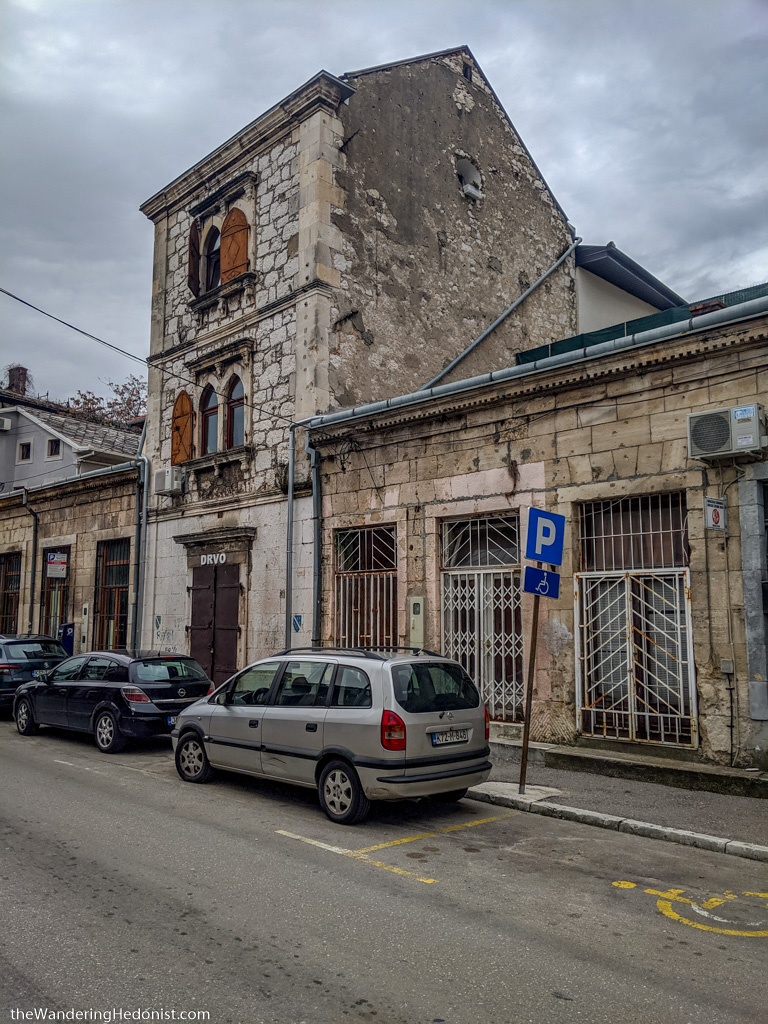
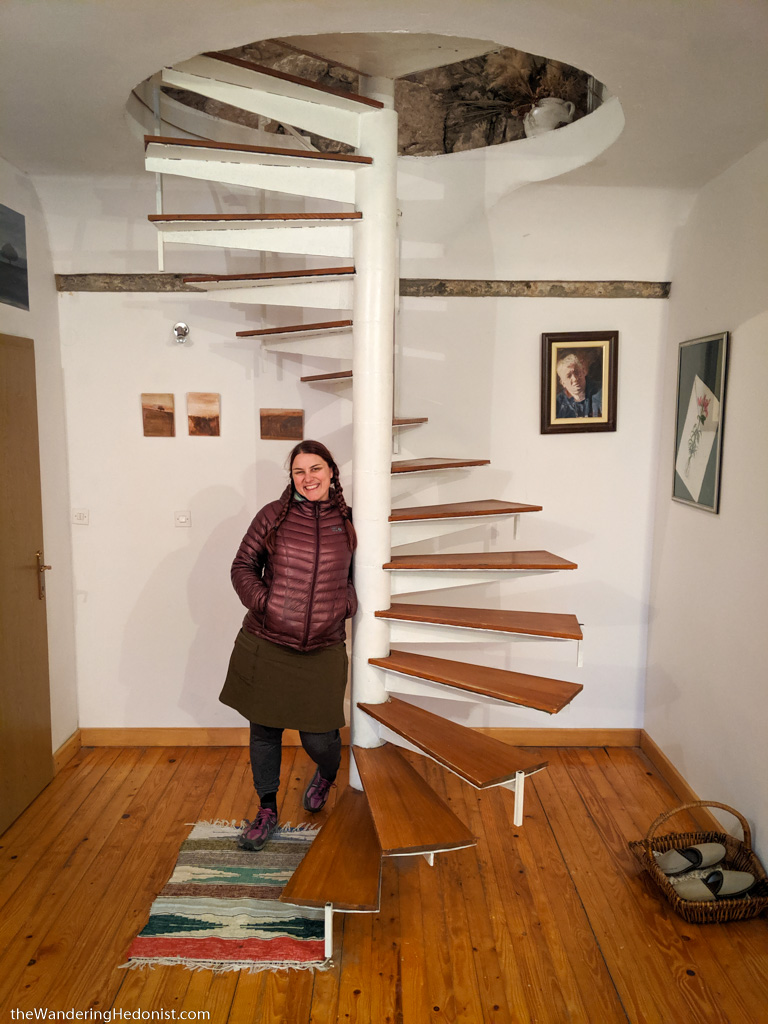
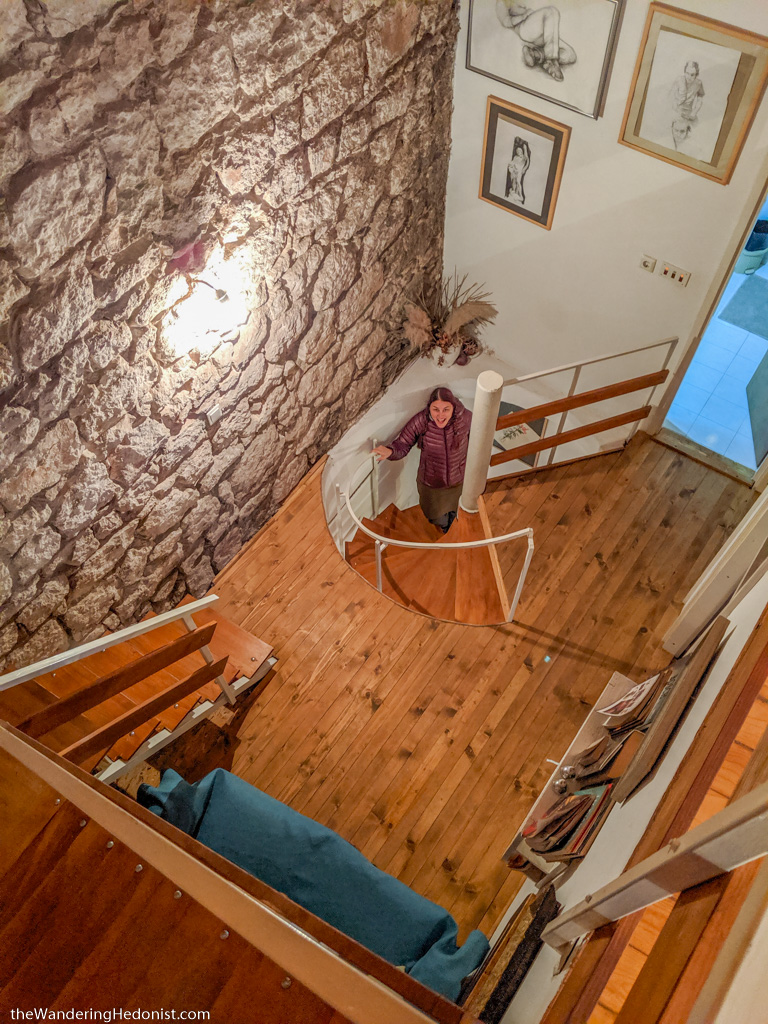
The drive from Mostar to Sarajevo
Leaving Mostar heading north we wound through steep hilled farmlands into the mountains. Some villages we passed were entirely destroyed. Burned and gutted farmhouses, schools, and churches. And then inevitably an enormous graveyard, one, two, sometimes three football fields in size packed edge to edge with stones. I could hardly imagine these little villages having this many people. And who, then, was left to bury them? Village after village. For over two hours.
The towns that seem to have come back were still populated with crumbling ruins and rough patched-over artillery holes through the sides of houses. Stone walls decorated with the lunar topography of war. There wasn’t a single town that we passed through that didn’t have such evidence. A clearly visible reminder of what had happened there.
The road winds it’s way through fantastic white mountains piercing up through the clouds like enormous canine teeth. The scale of one mountain repeatedly eclipsed by the next even larger one in the distance. Our heads swivel from one side of the bus to the other, Katy snapping pictures. We seem to be the only tourists on the bus. And then a beautiful valley. And then another mountain. Katy grips my leg mouthing the word beautiful. Picture perfect towns lining lakes and steep hillsides peeking through the mists and the newly fallen snow.
And then inevitably another graveyard, stretching on for an impossibly long time. The feeling of awe giving way to sadness. Self reflection. And then nothing. And then another beautiful hillside. Repeat.
As we reach the outskirts of Sarajevo, the landscape turns to towering soviet era block houses, monolith grids of windows and balconies with drab nearly worn away paint and stained concrete. And here too we see the war. Riddled across the block houses. Huge sections of residential towers filled in by red ceramic blocks, filling in the areas that had collapsed, a patchwork of unmatched old and new materials. Artillery holes still puncturing cement balcony walls. An almost indiscriminate pattern of firing. What were they shooting at? The bus grinds through midday traffic as we edge closer to the city center. The buildings flanking the station could have easily have been bombarded yesterday from how they looked. Sarajevo, too, it seemed, is still recovering from what happened. Our cab heads towards our apartment in the town center and we pass factories and apartment buildings reduced to crumbling red outlines, looking more ancient than some Roman ruins that we have seen. We have just arrived at our apartment and haven’t yet ventured across the bridge to the town center. Katy says we’re going to think positive thoughts here and try to look for the good parts of the current city instead of dwelling so much on the recent past. I’m excited to give that a try.
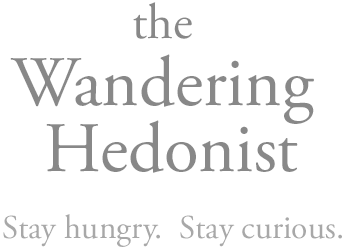
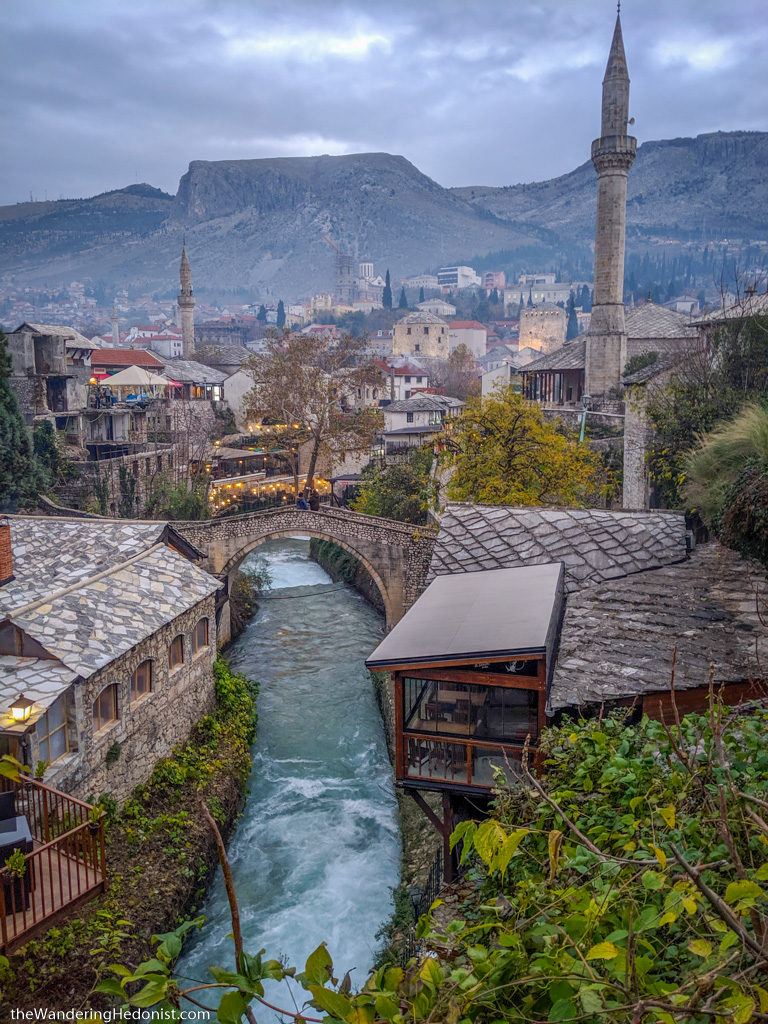





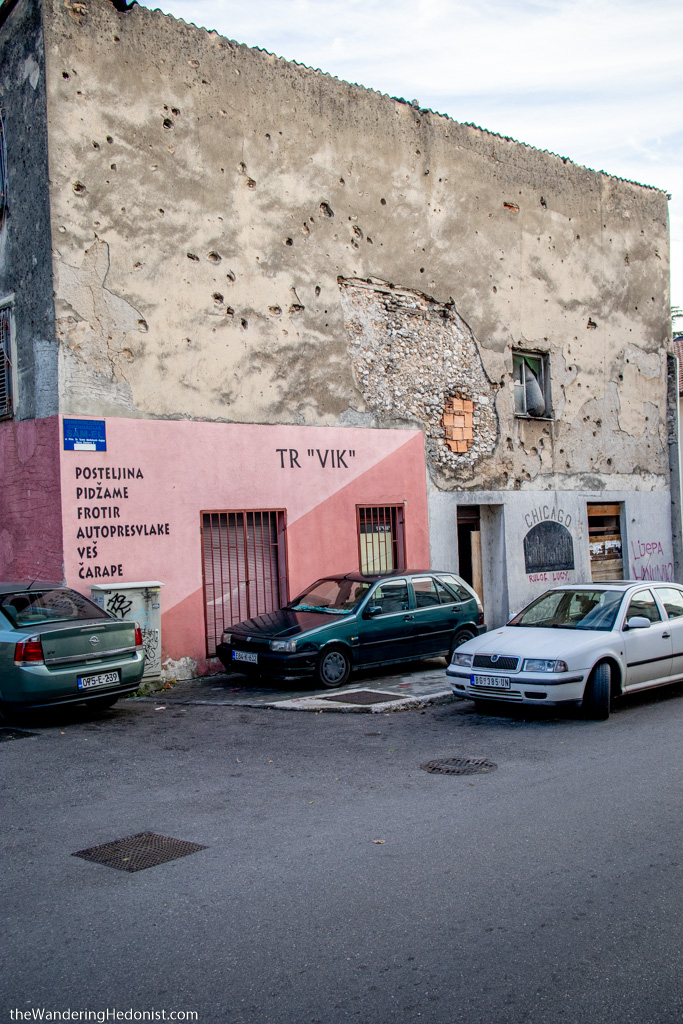
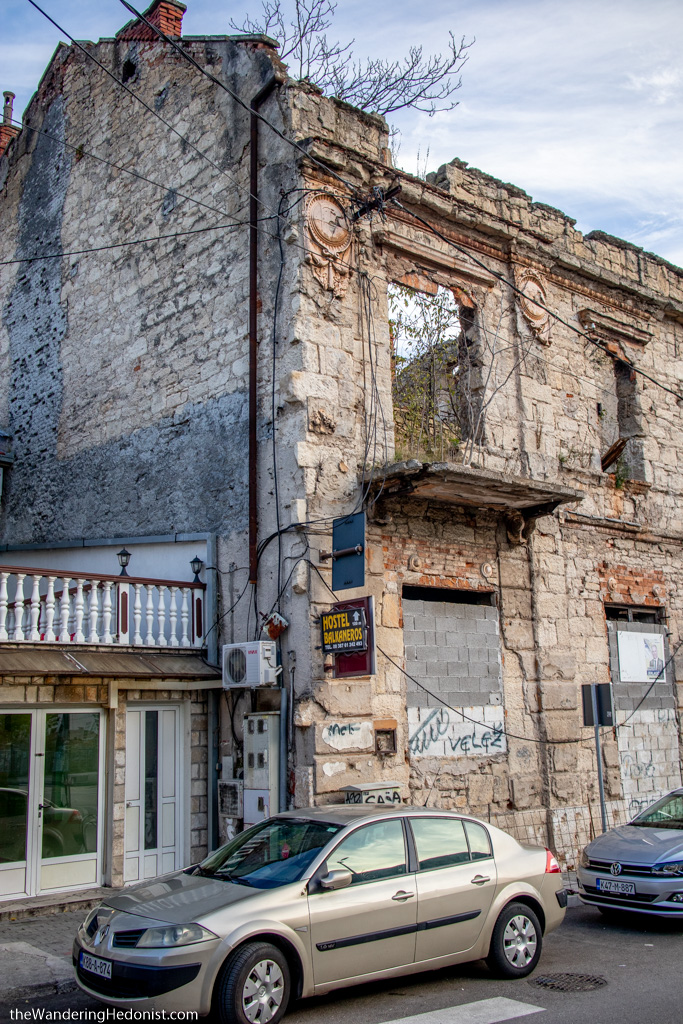
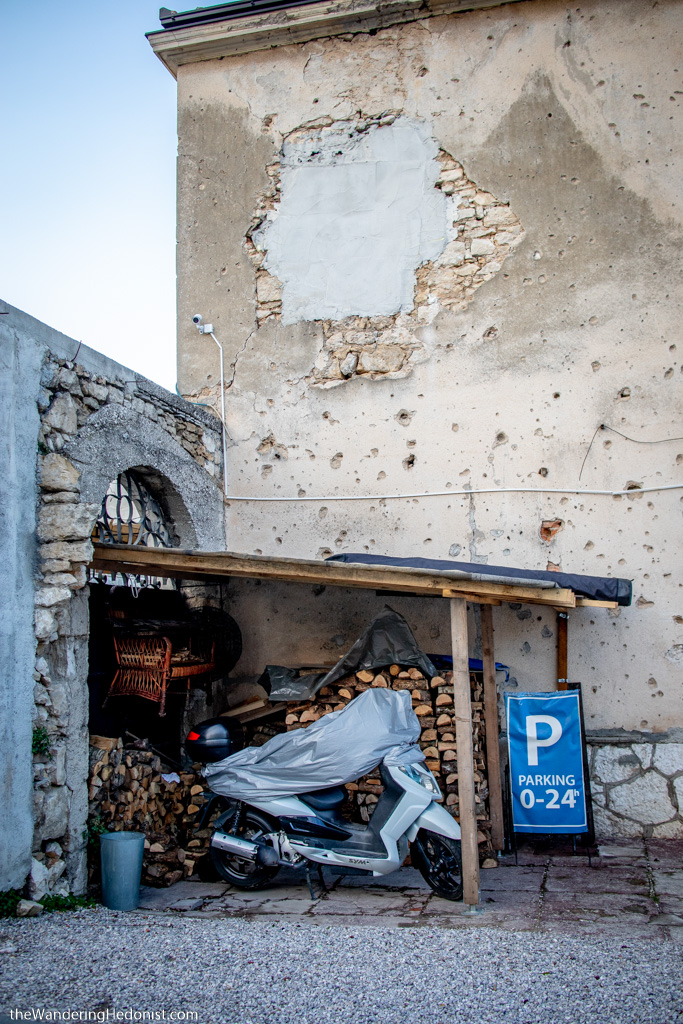
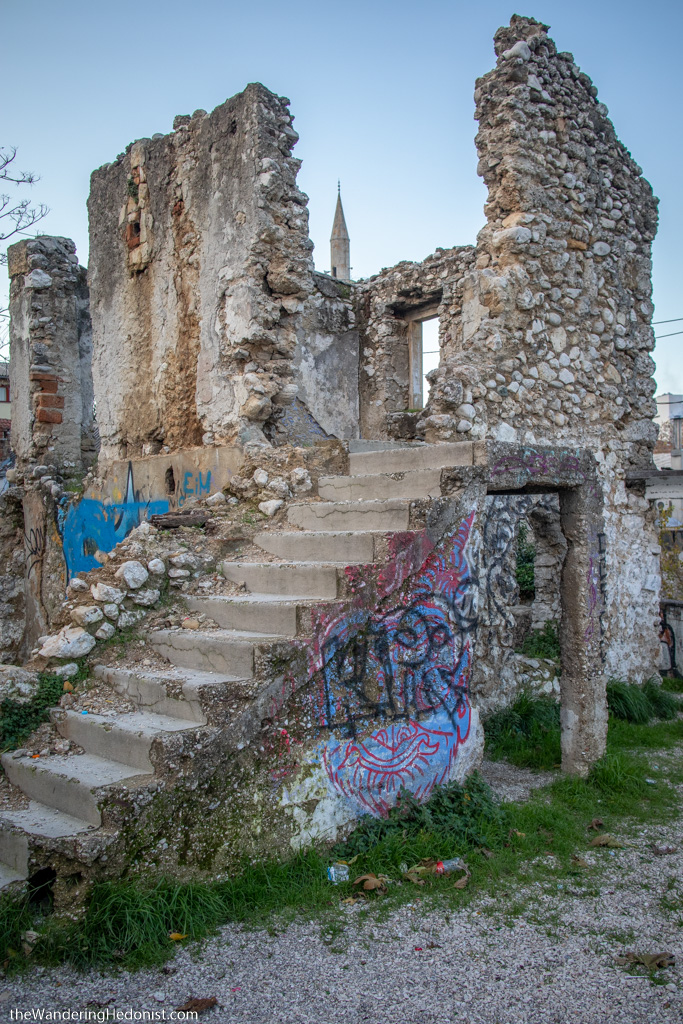
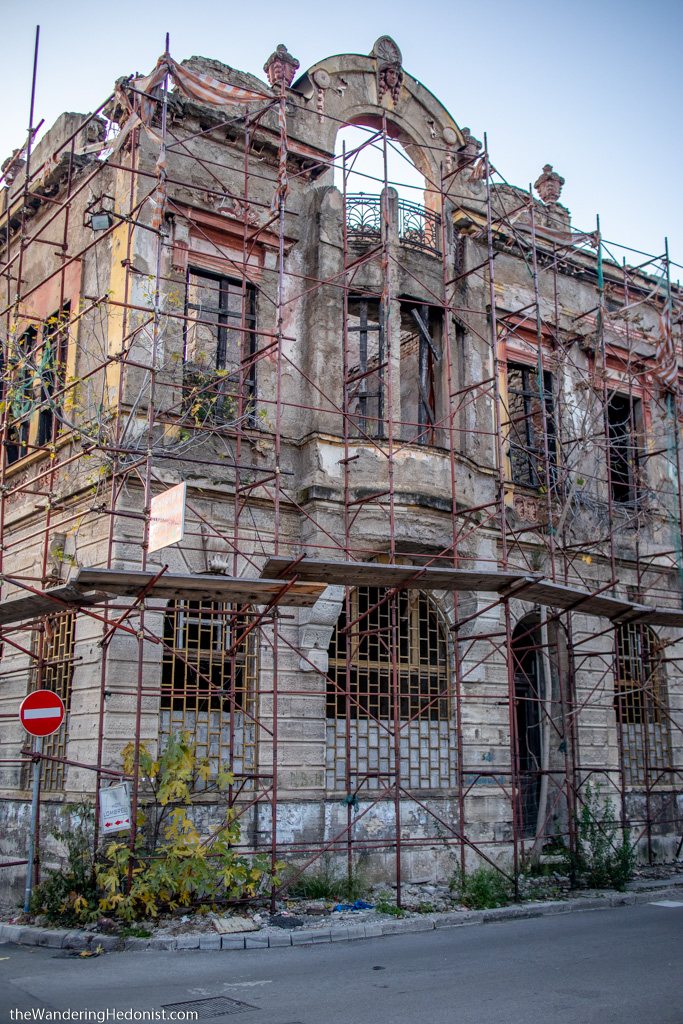
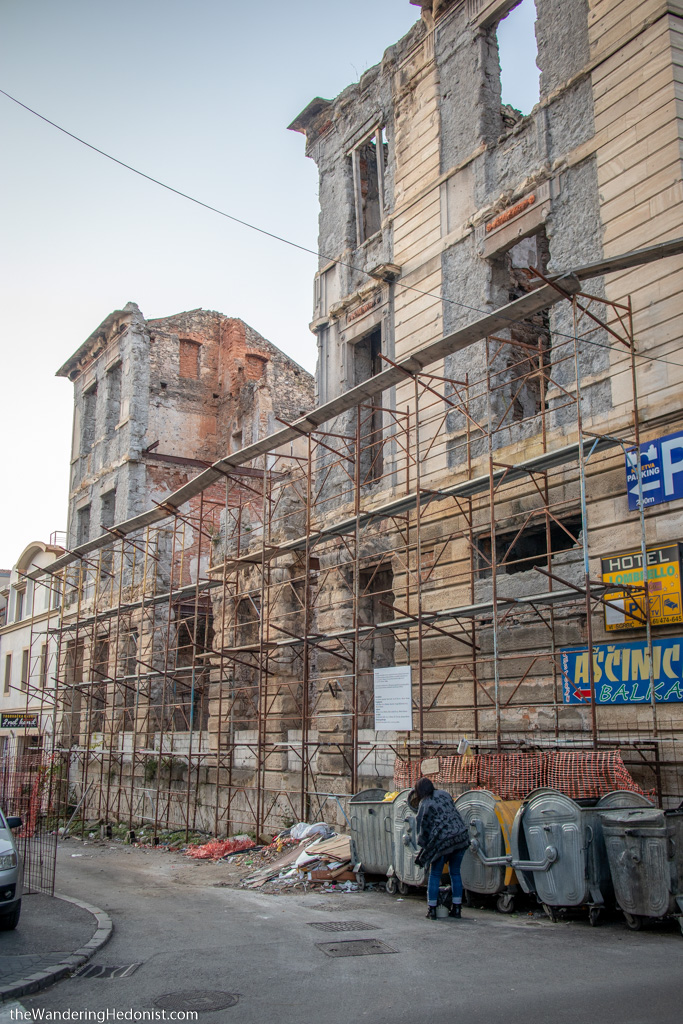
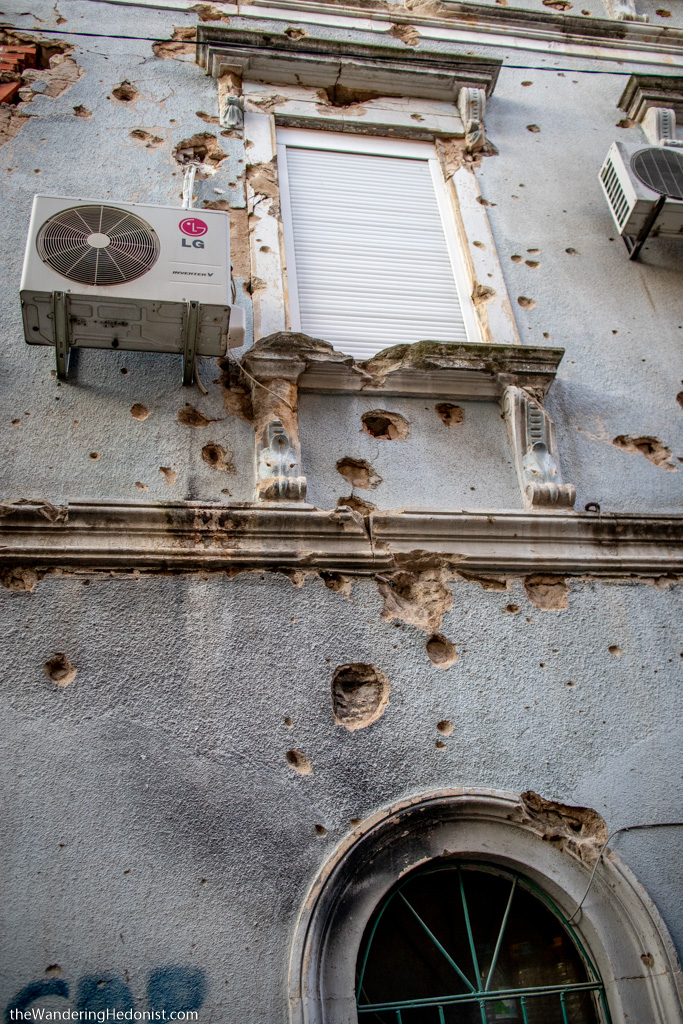
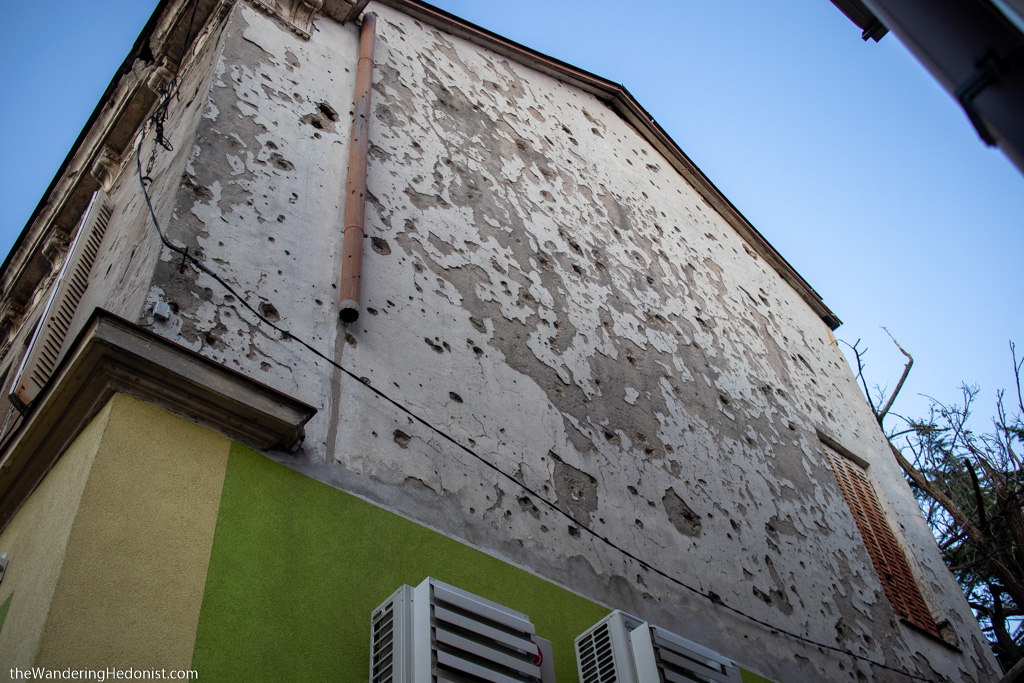
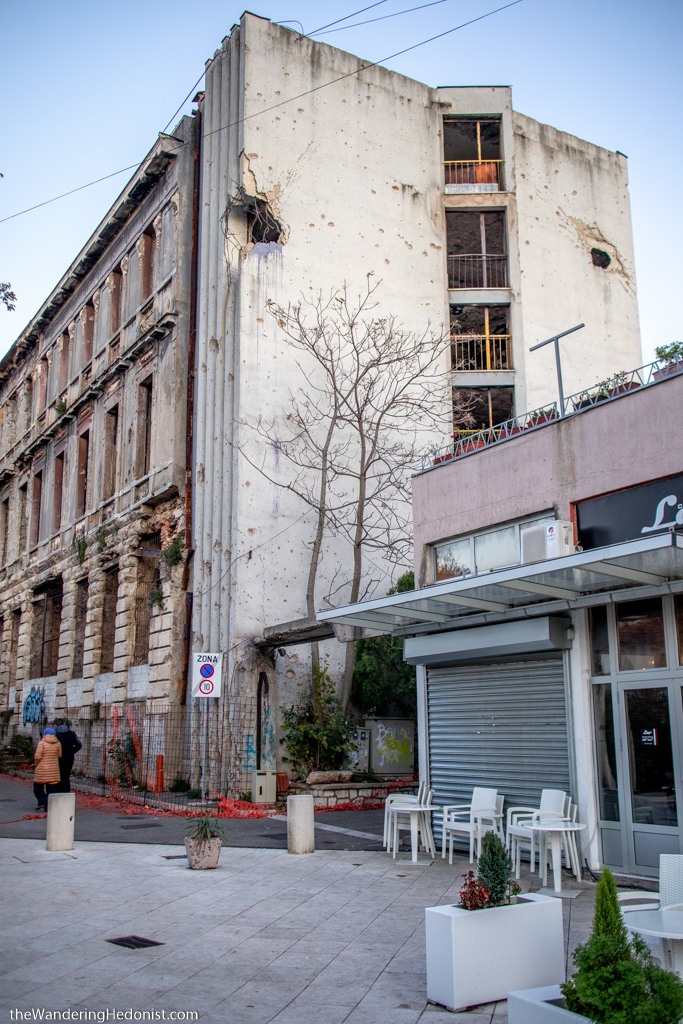
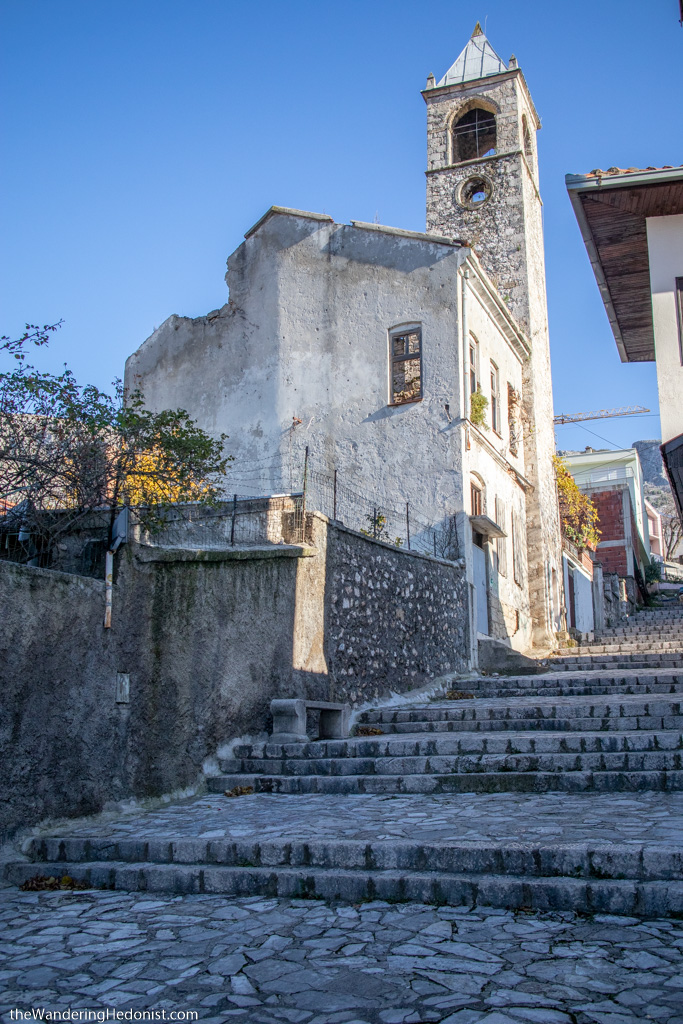
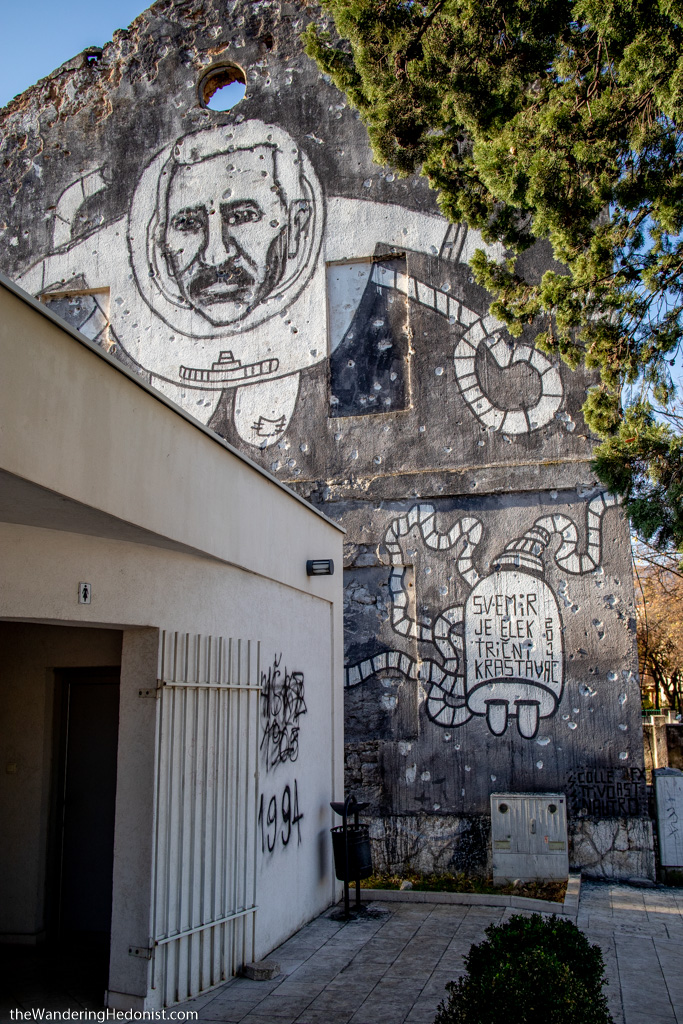

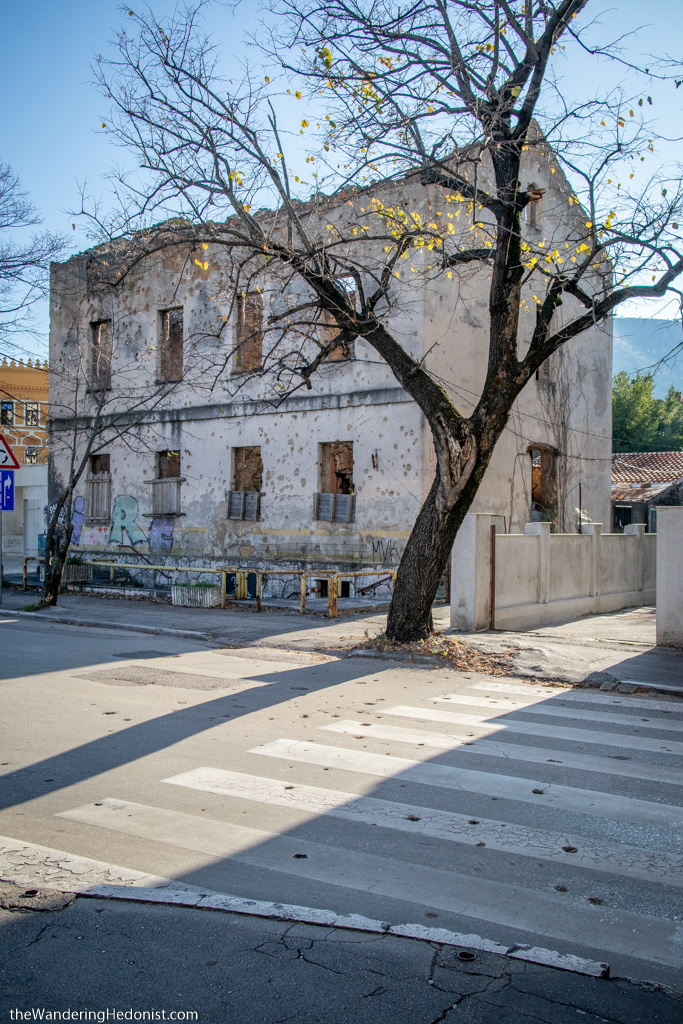
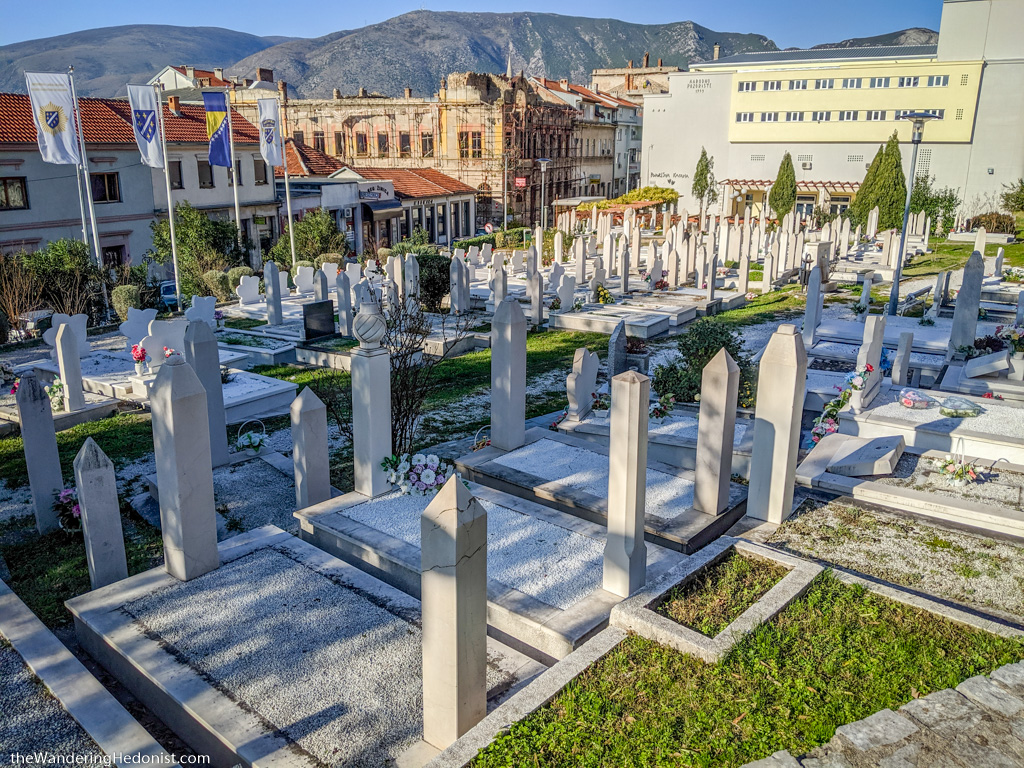
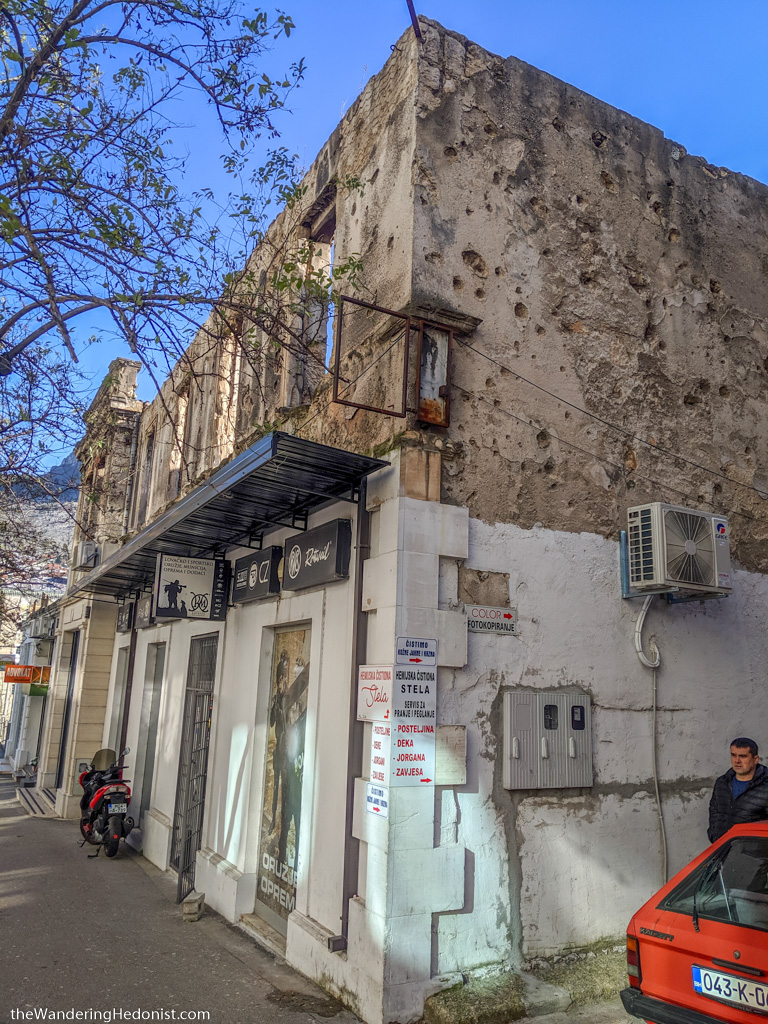
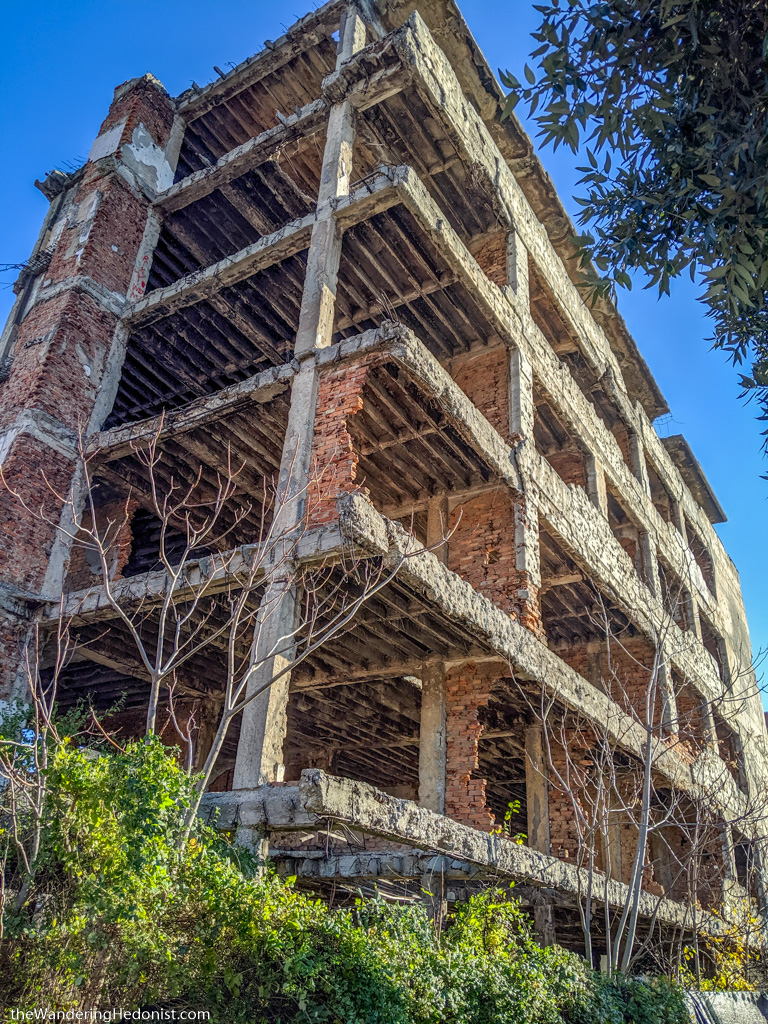


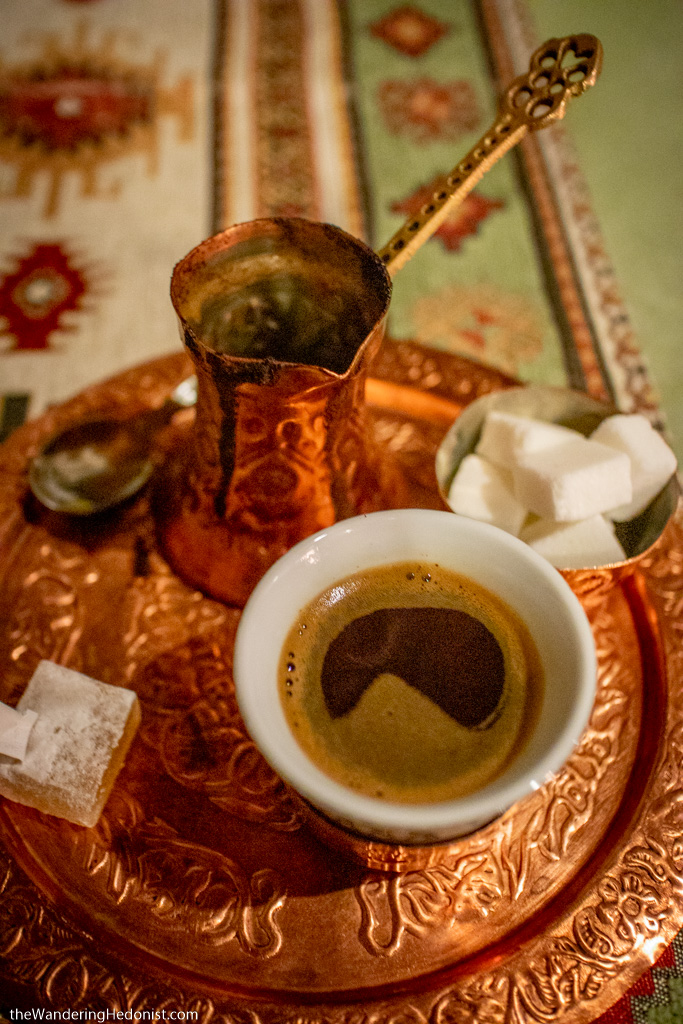



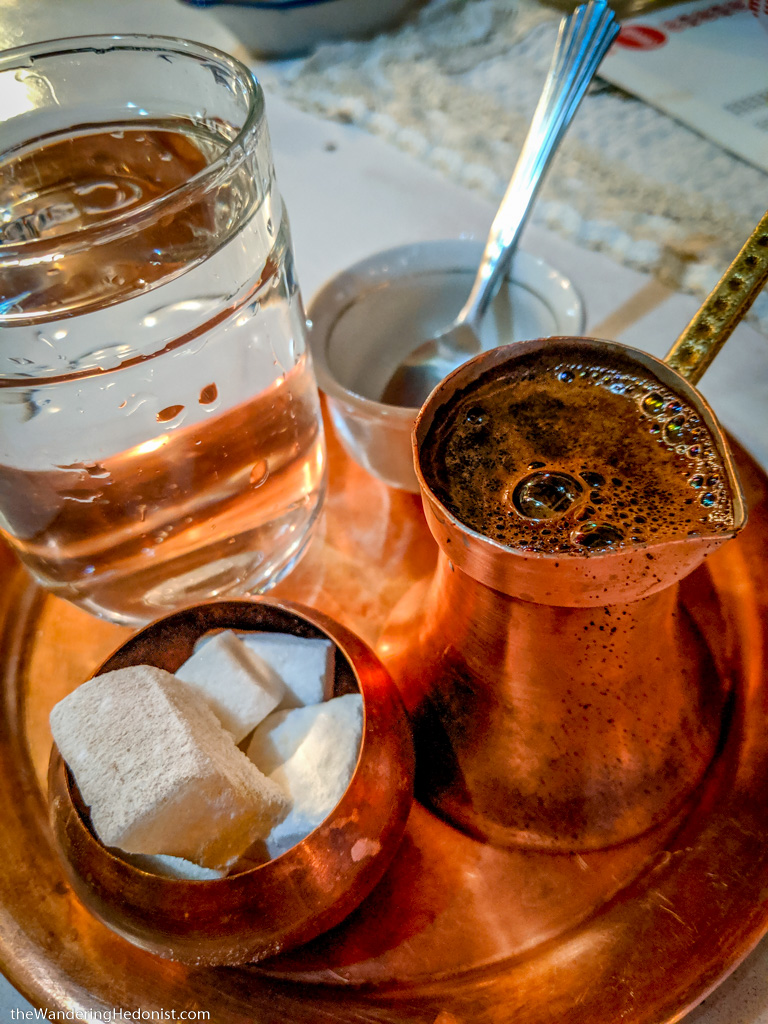

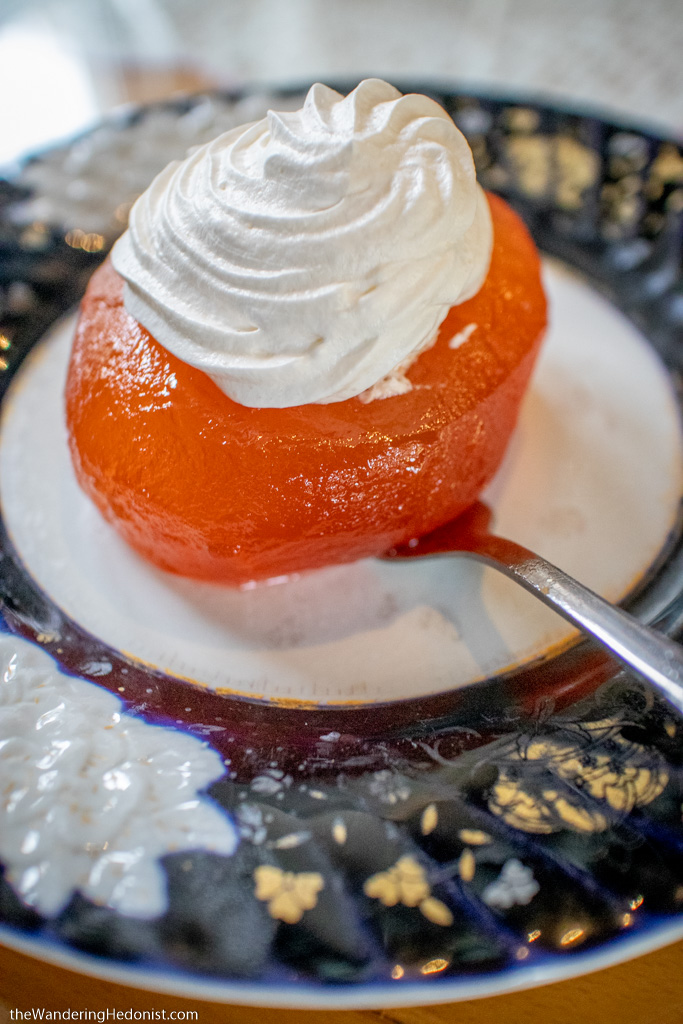
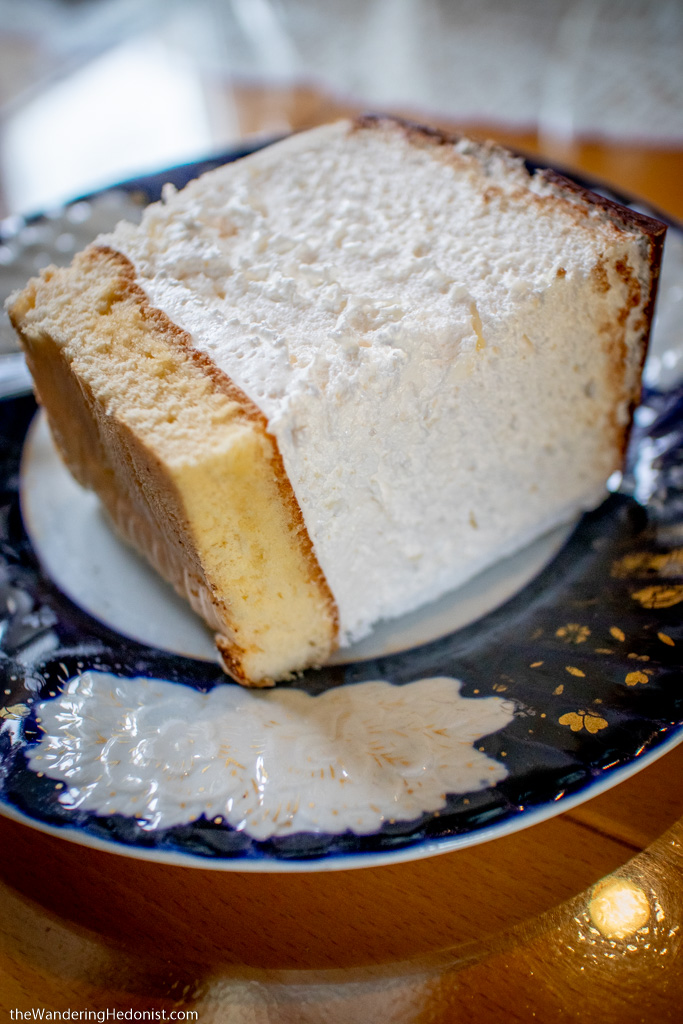
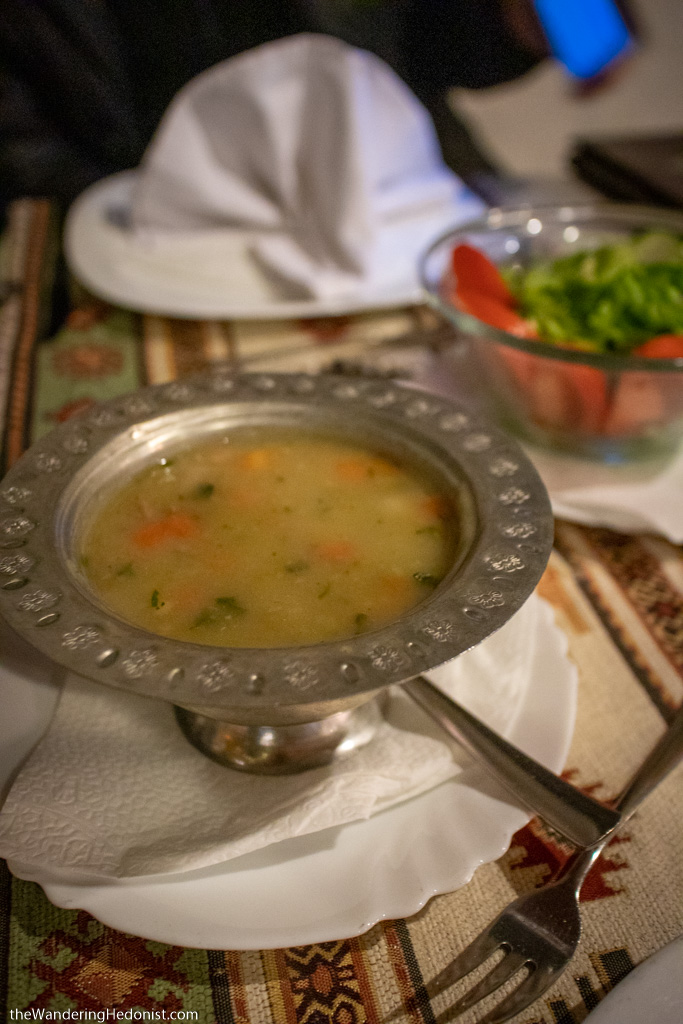
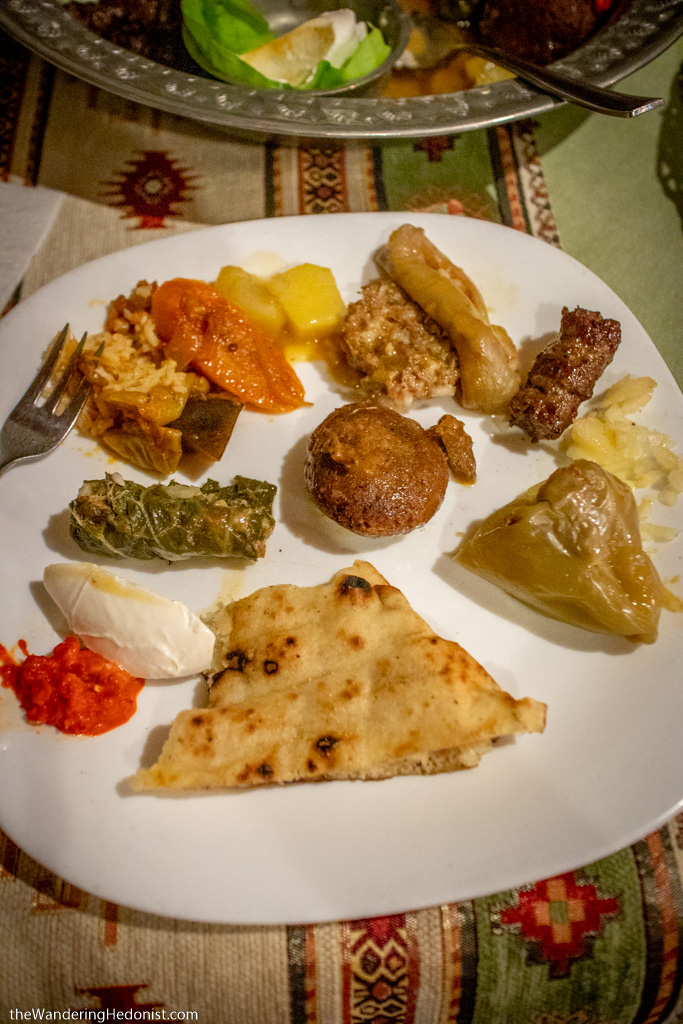
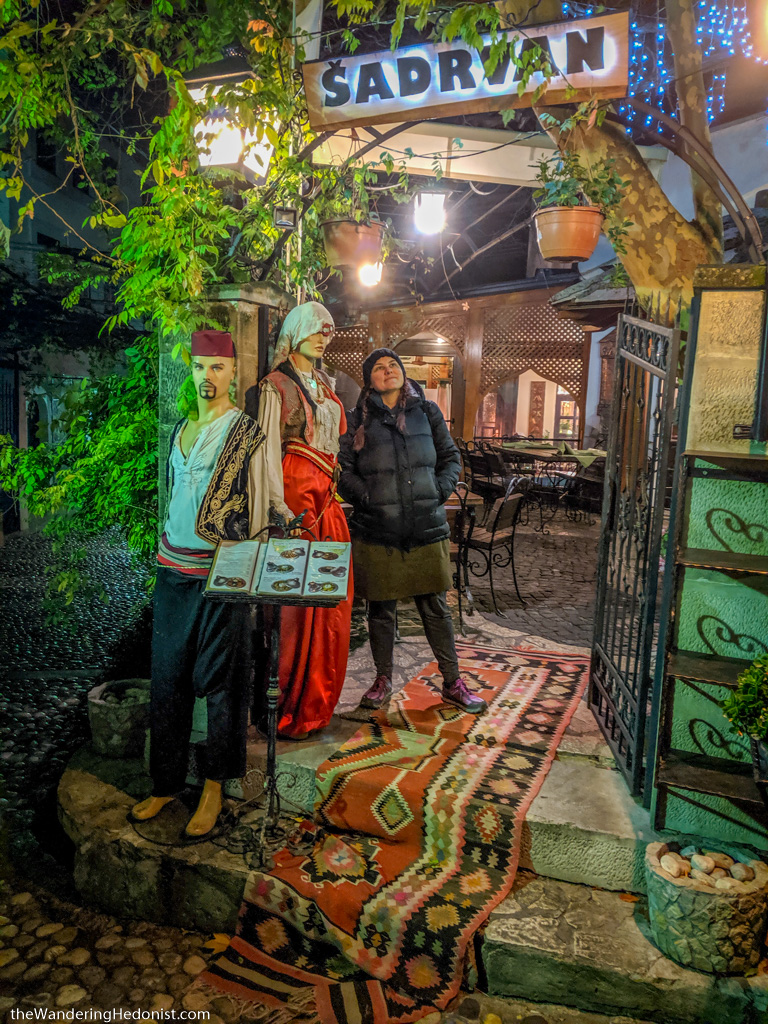
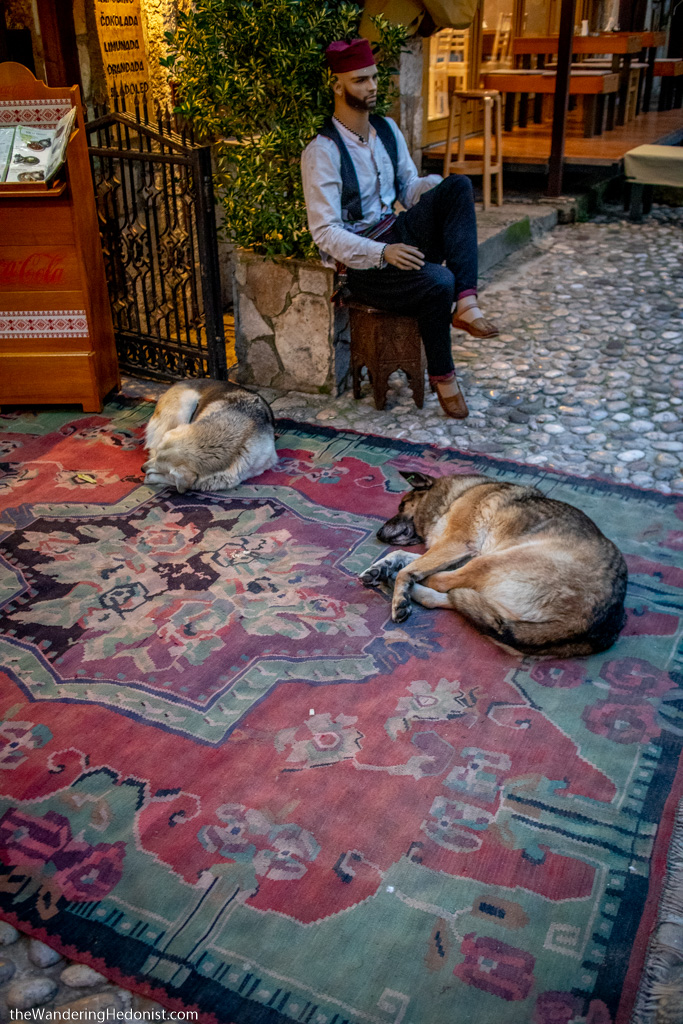
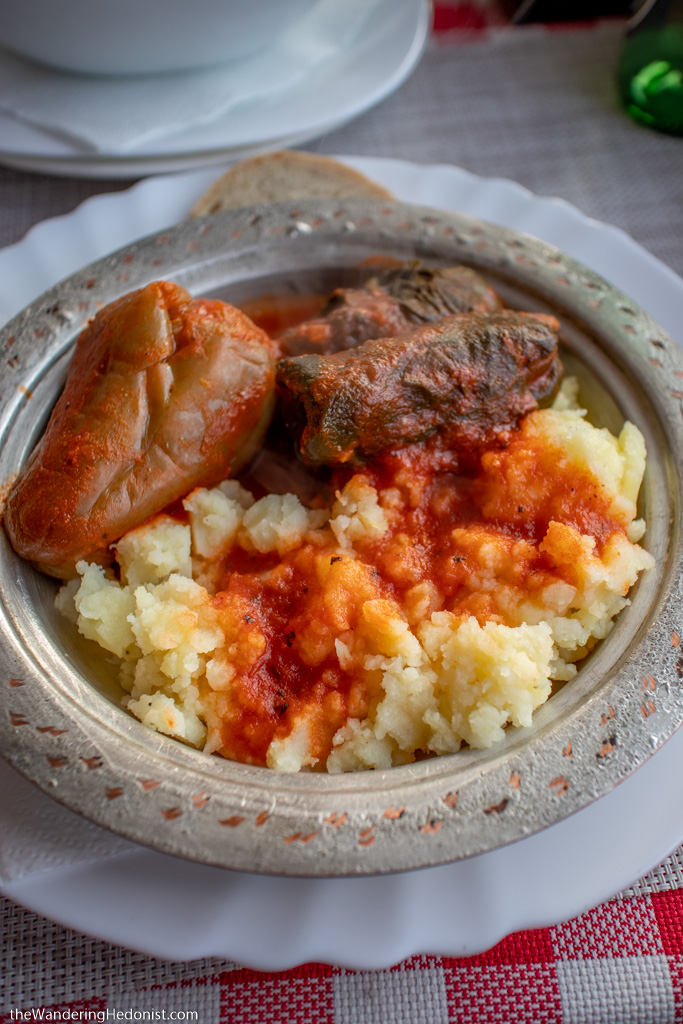


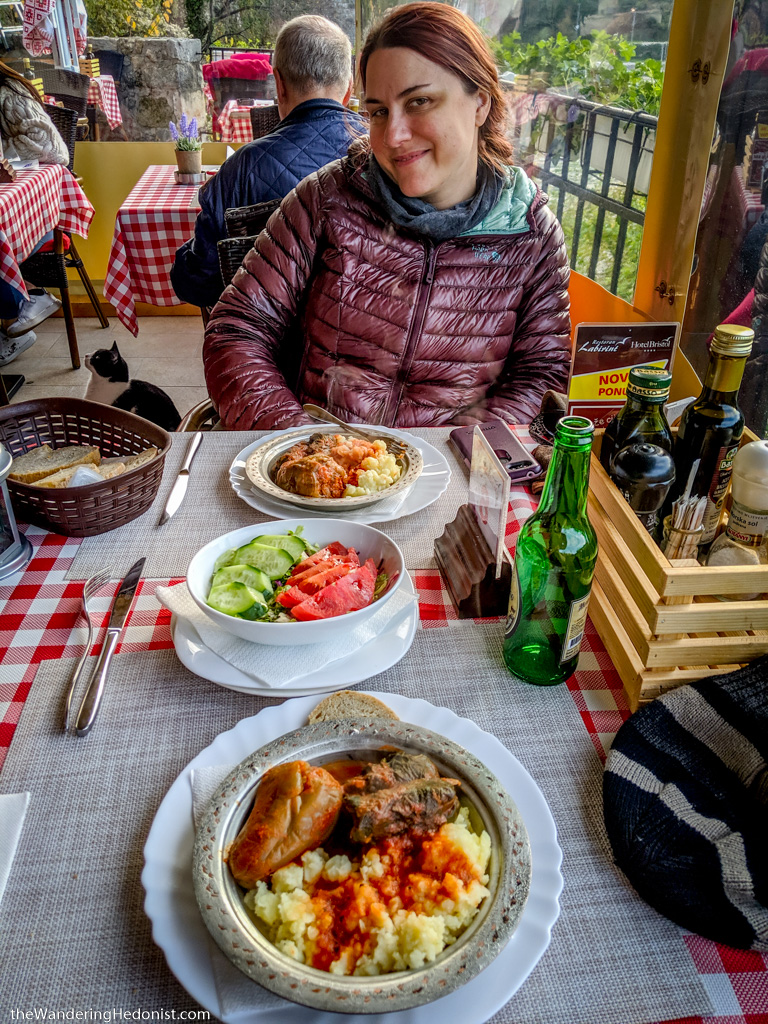
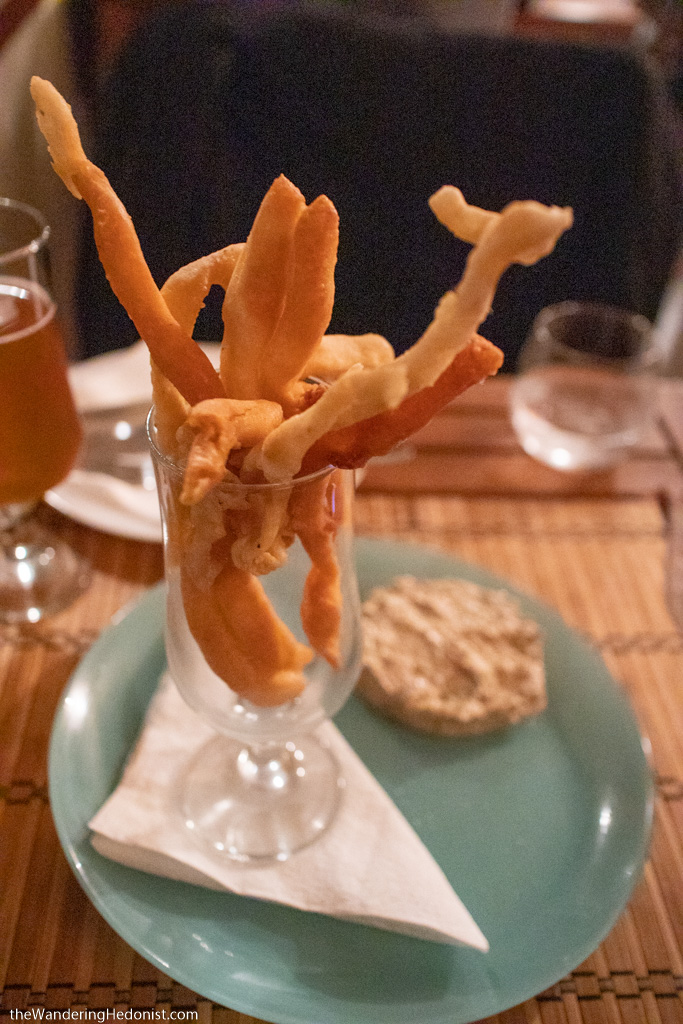
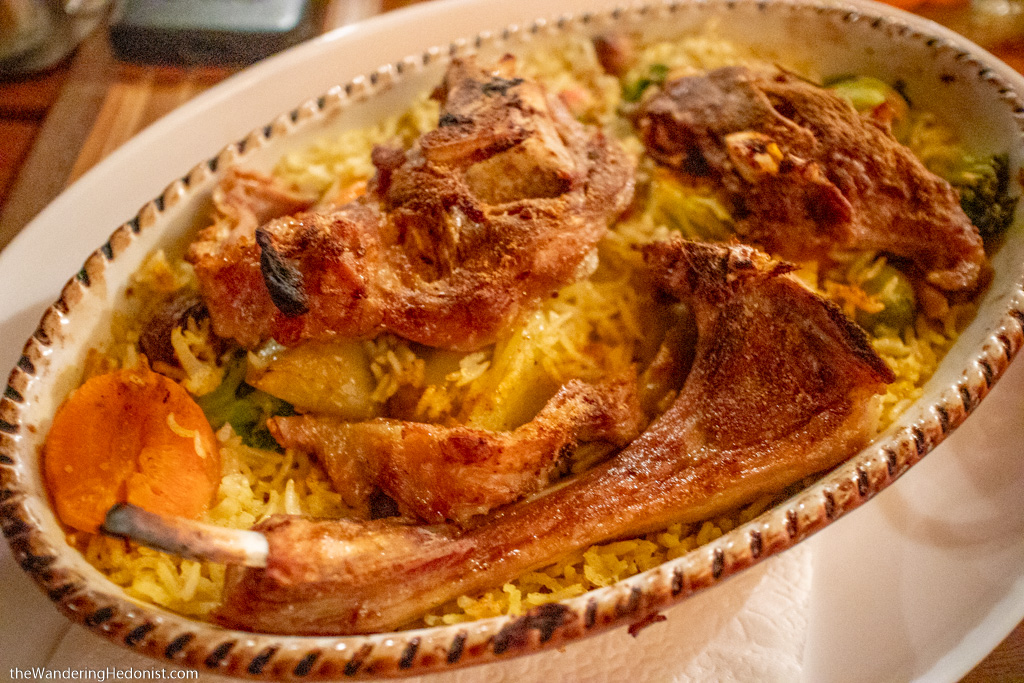
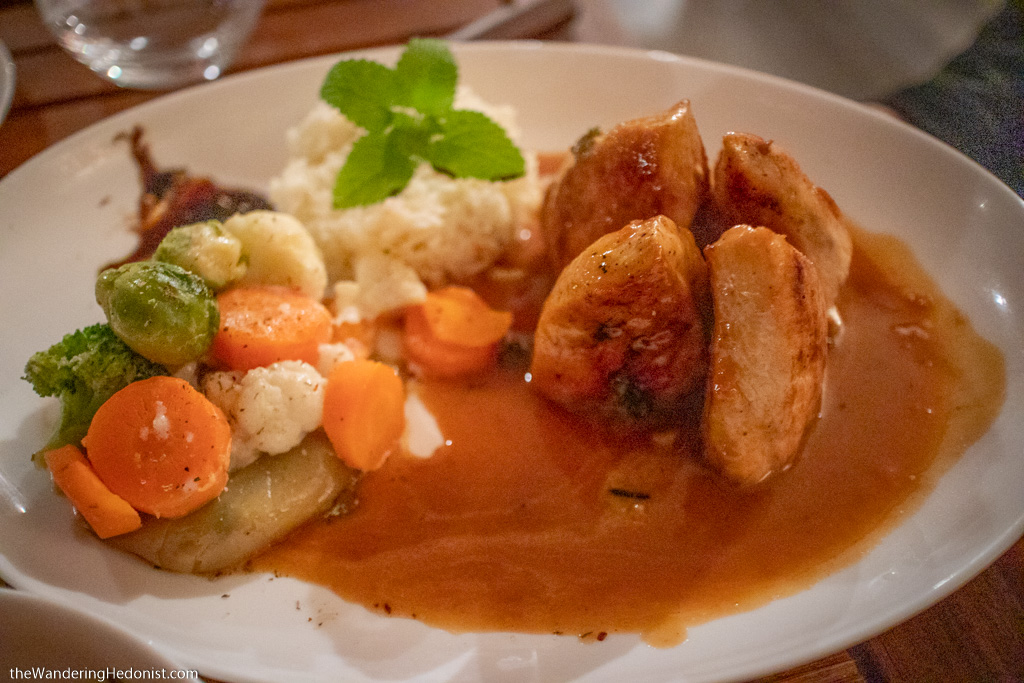



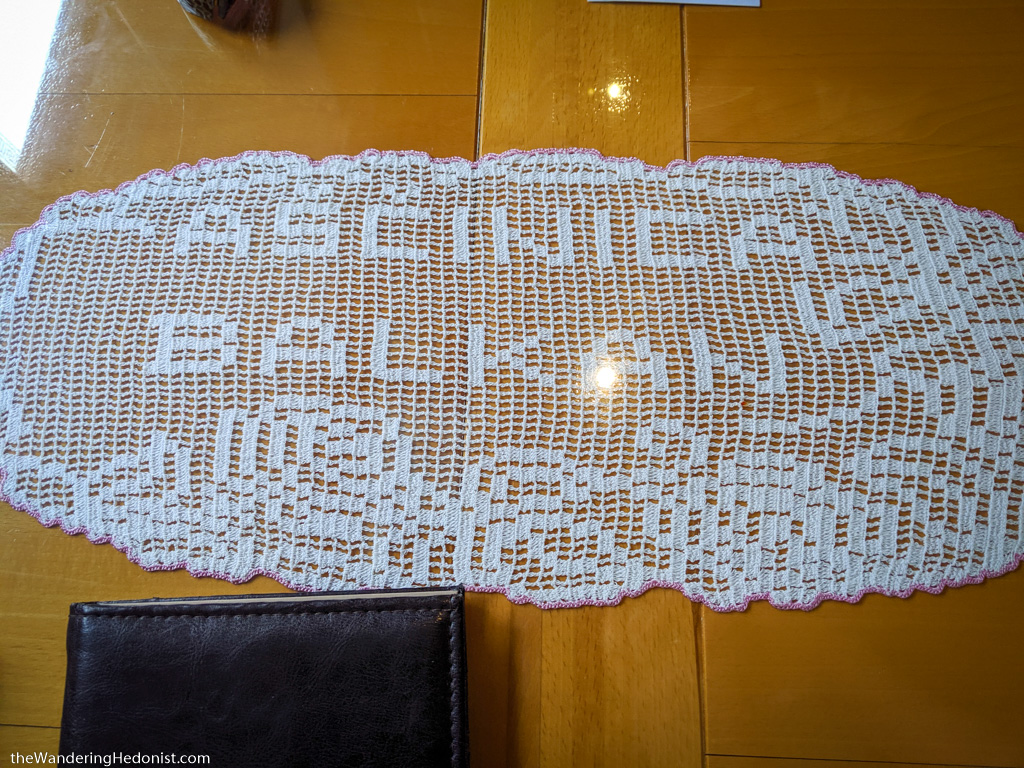
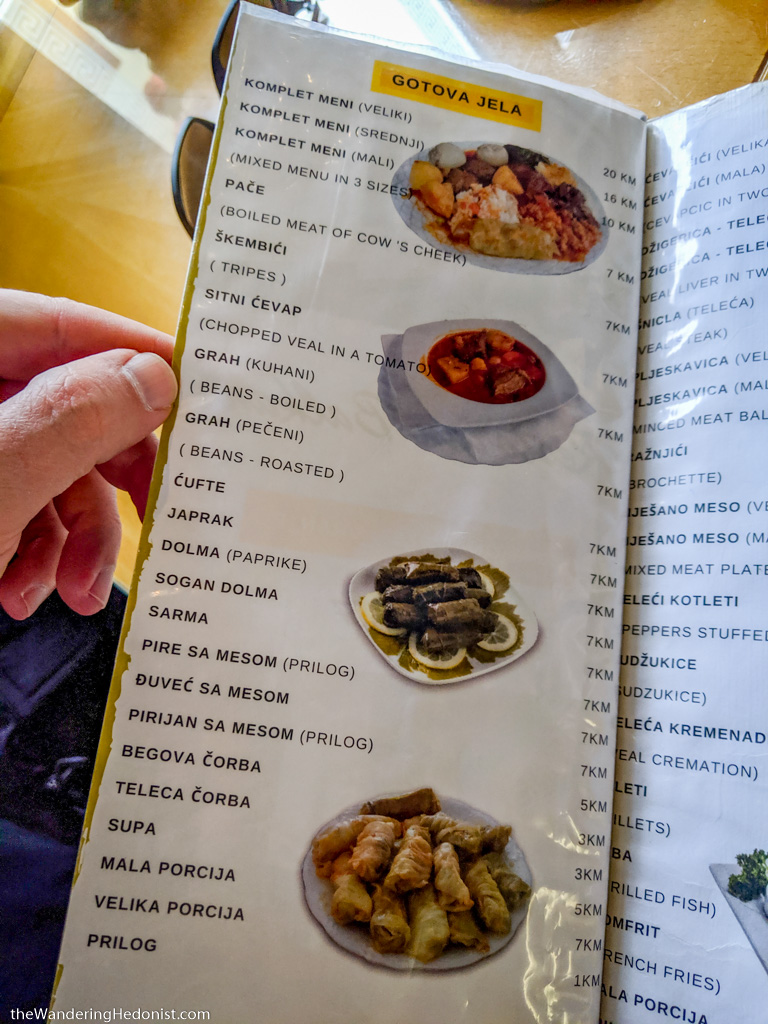

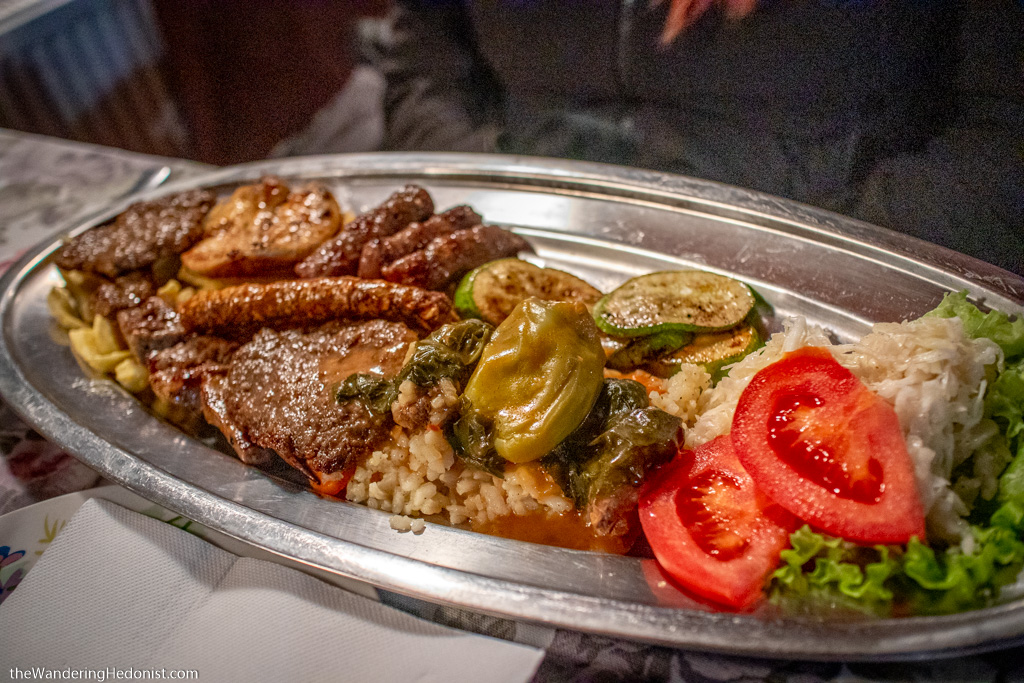

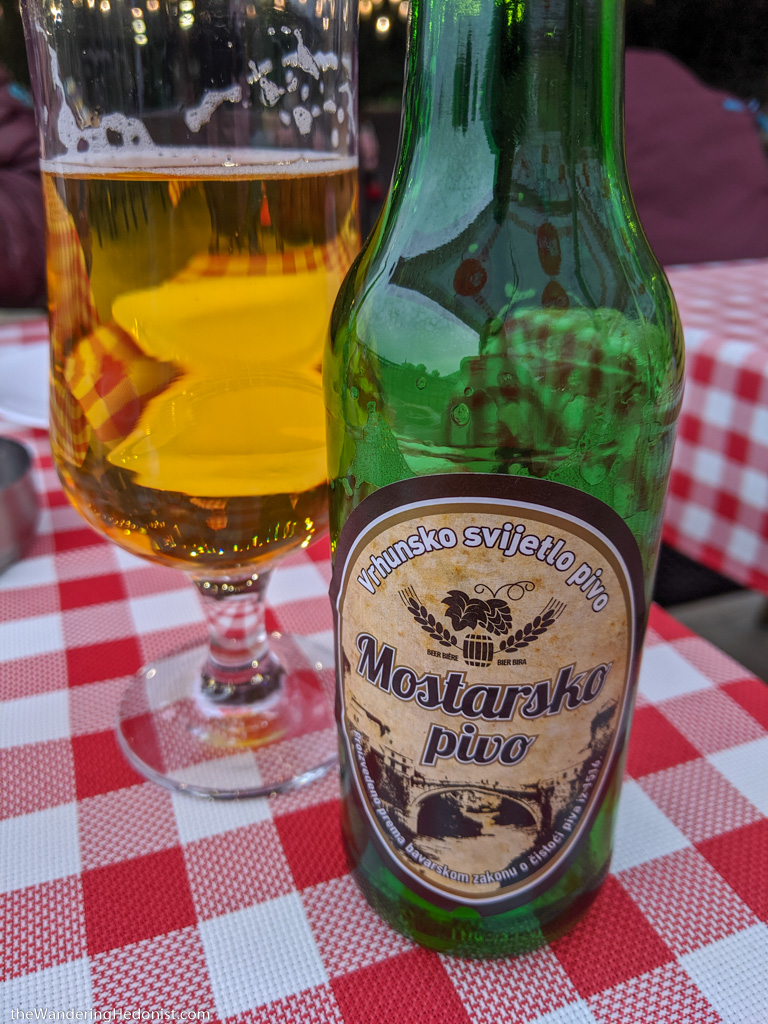
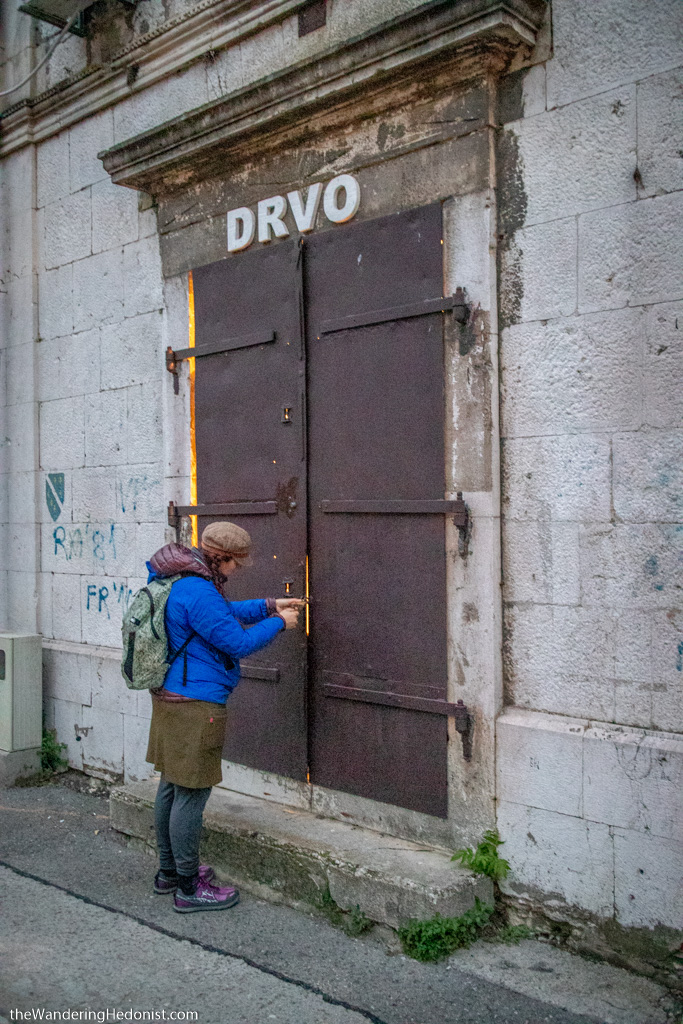
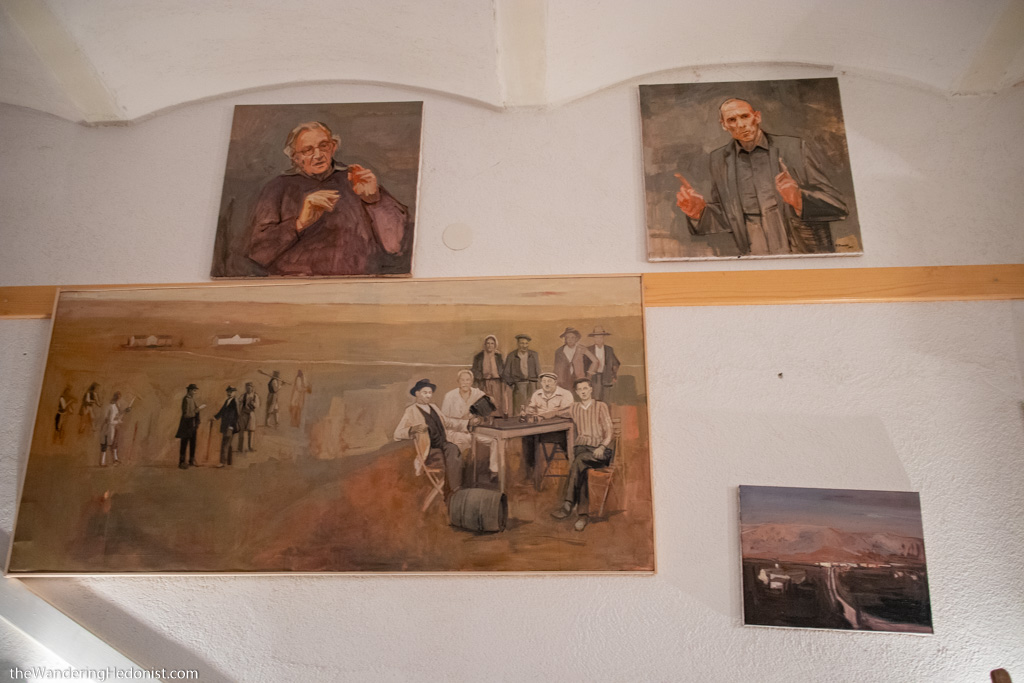

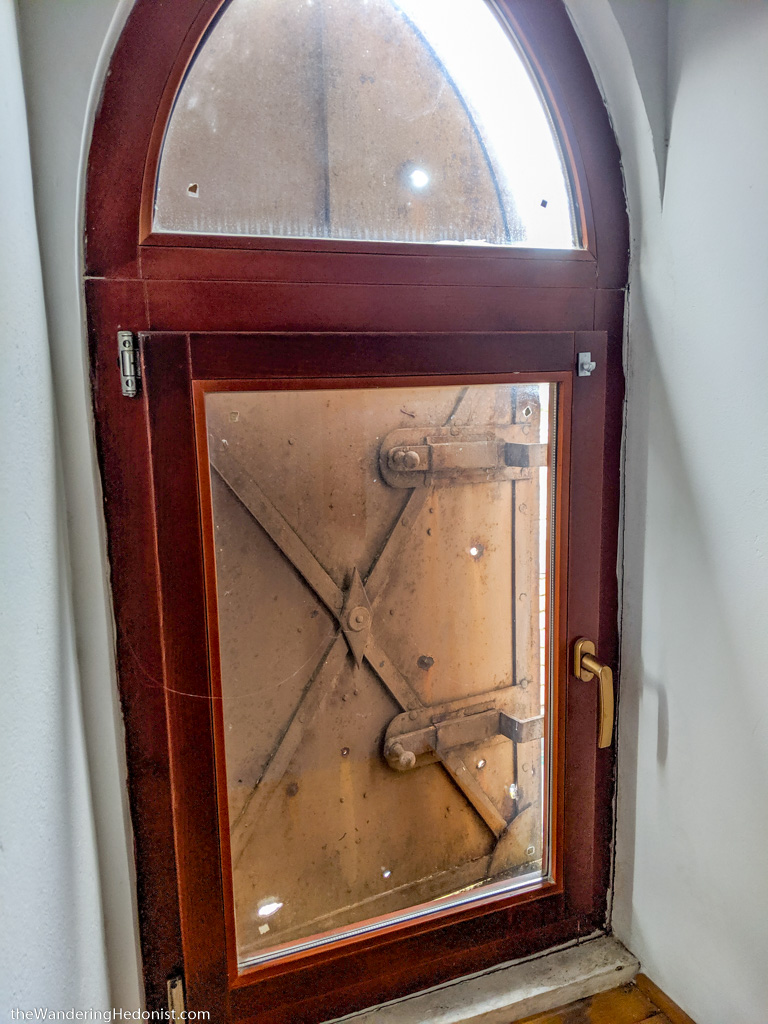
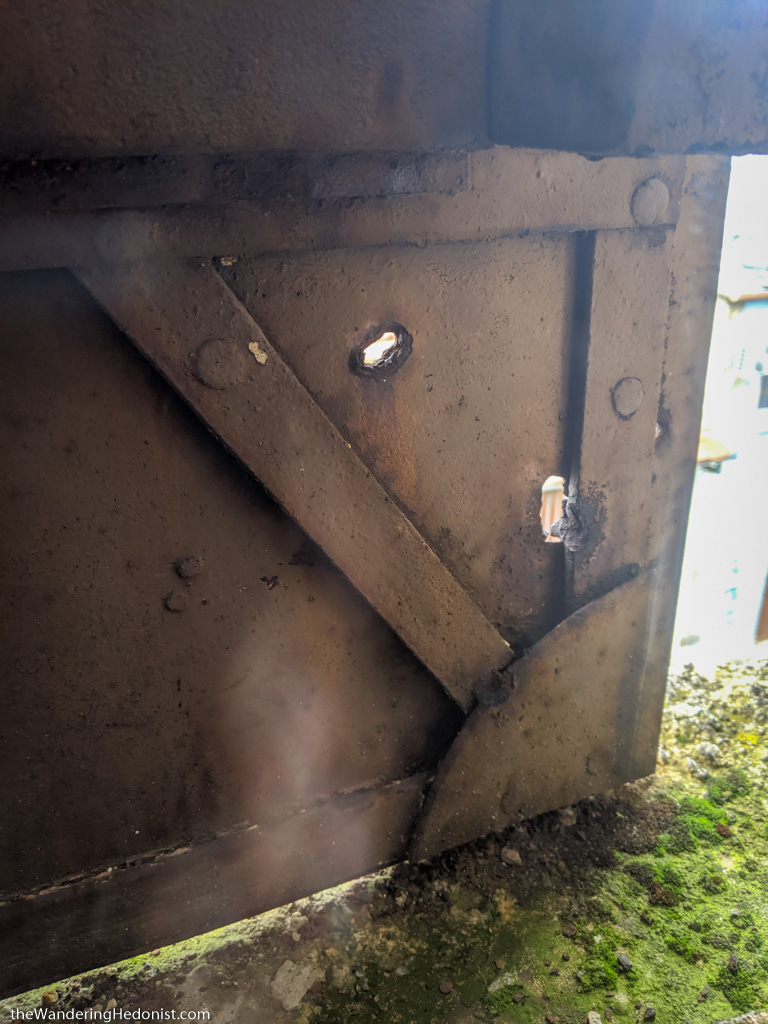
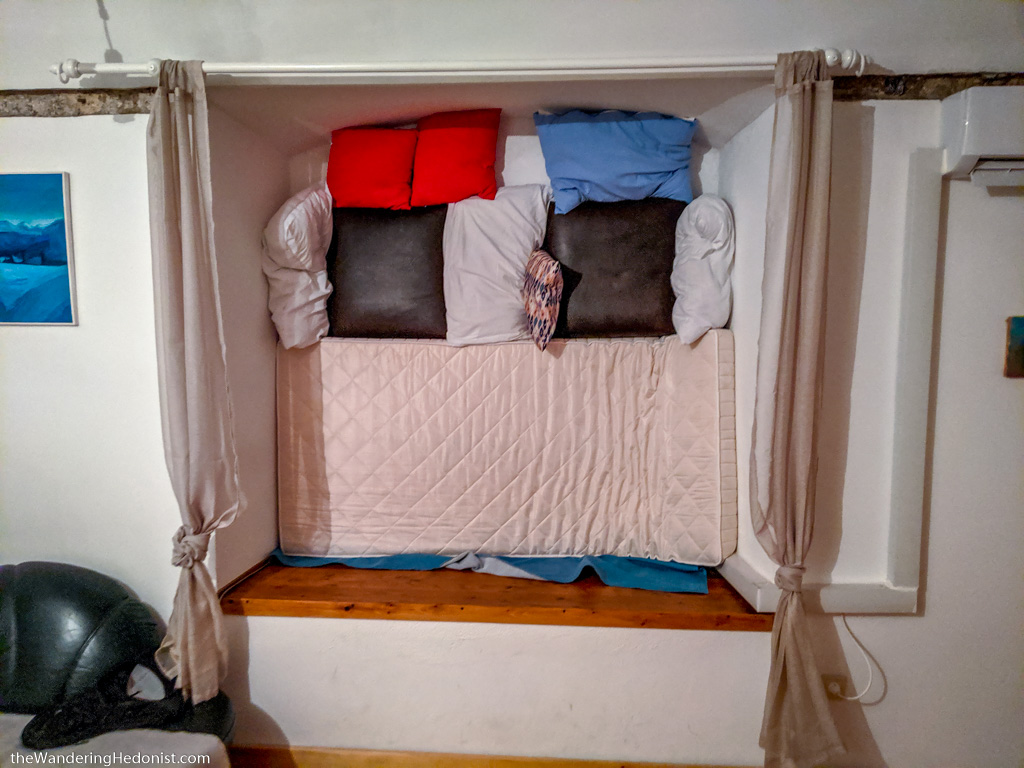
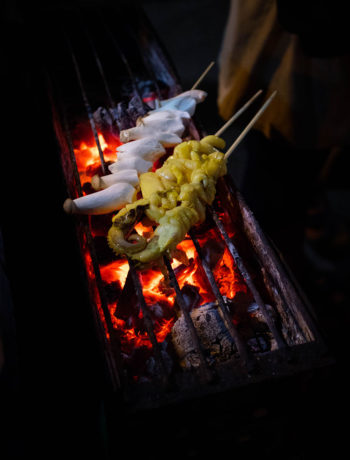
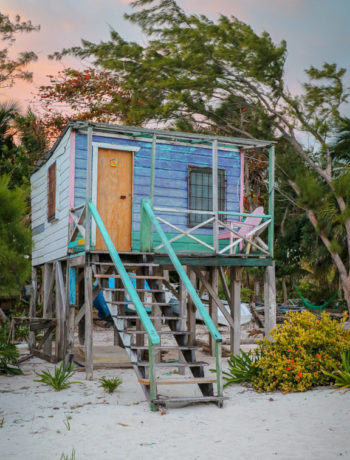
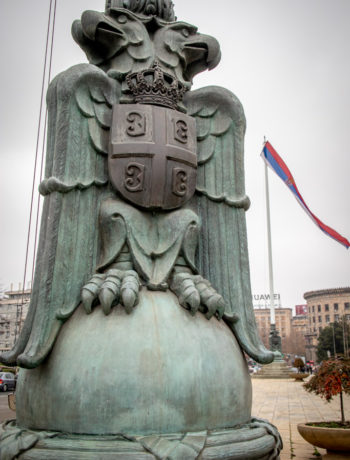
No Comments